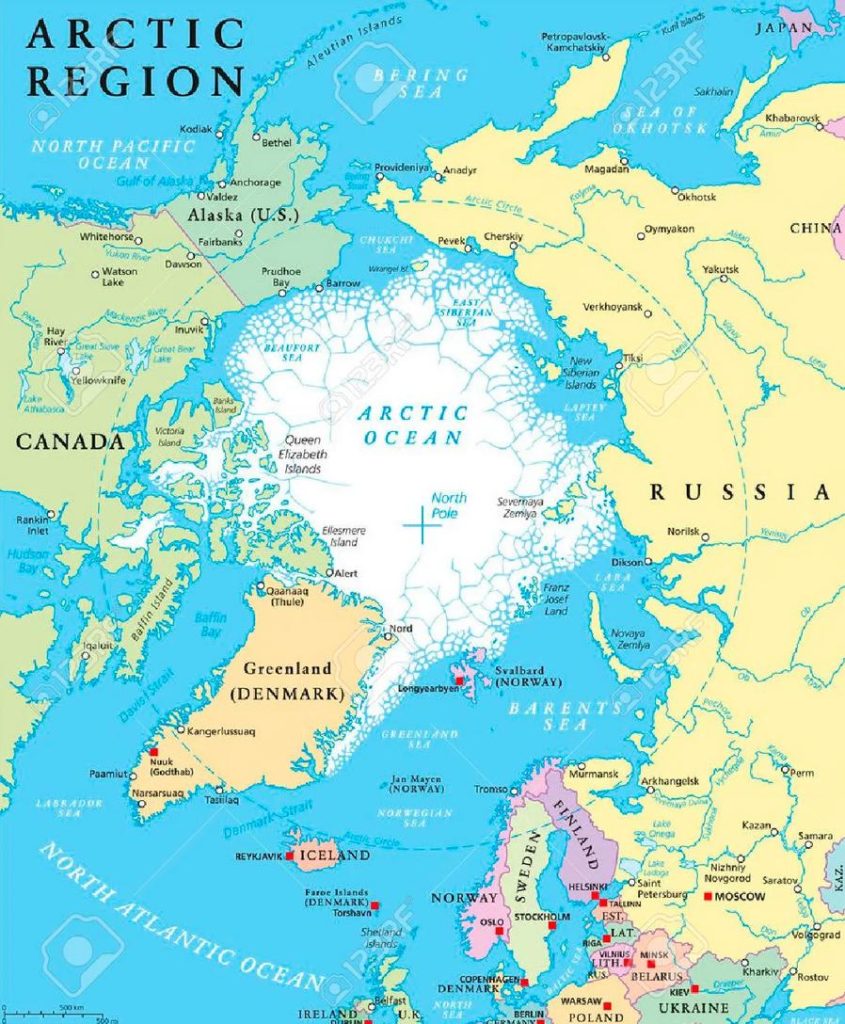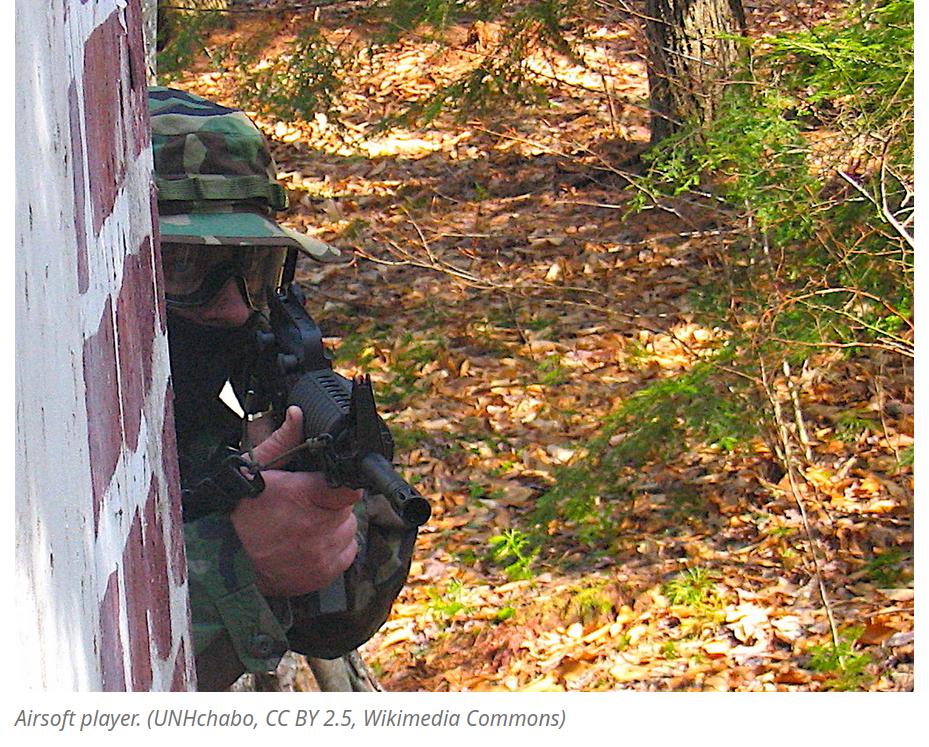Another daily dose of fun, frolic and an engagement in the geopolitical thoughts of the day. I hope that this article finds you well and that you enjoy it’s content.
Let’s start here…
Russia Rewrites the Art of Hybrid War
May 22, 2022 Pepe Escobar Original Article Here
Hybrid War is being fought predominantly in the economic/financial battleground – and the pain dial for the collective West will only go up.
The ironclad fictional “narrative” imposed all across NATOstan is that Ukraine is “winning”.
So why would weapons peddler retrofitted as Pentagon head Lloyd “Raytheon” Austin literally beg since late February to have his phone calls answered by Russian Defense Minister Shoigu, only to have his wish finally granted?
It’s now confirmed by one of my top intel sources. The call was a direct consequence of panic. The United States Government (USG) by all means wants to scotch the detailed Russian investigation – and accumulation of evidence – on the US bioweapon labs in Ukraine, as I outlined in a previous column.
This phone call happened exactly after an official Russian statement to the UN Security Council on May 13: we will use articles 5 and 6 of the Convention on the Prohibition of Bioweapons to investigate the Pentagon’s biological “experiments” in Ukraine.
That was reiterated by Under Secretary-General of the UN in charge of disarmament, Thomas Markram, even as all ambassadors of NATO member countries predictably denied the collected evidence as “Russian disinformation”.
Shoigu cold see the call coming eons away. Reuters, merely quoting the proverbial “Pentagon official”, spun that the allegedly one-hour-long call led to nothing. Nonsense. Austin, according to the Americans, demanded a “ceasefire” – which must have originated a Siberian cat smirk on Shoigu’s face.
Shoigu knows exactly which way the wind is blowing on the ground – for Ukrainian Armed Forces and UkroNazis alike. It’s not only the Azovstal debacle – and Kiev’s all-around army breakdown.
After the fall of Popasnaya – the crucial, most fortified Ukrainian stronghold in Donbass – the Russians and Donetsk/Luhansk forces have breached defenses along four different vectors to north, northwest, west and south. What’s left of the Ukrainian front is crumbling – fast, with a massive cauldron subdivided in a maze of mini-cauldrons: a military disaster the USG cannot possibly spin.
Now, in parallel, we can also expect full exposure – on overdrive – of the Pentagon bioweapons racket. The only “offer you can’t refuse” left to the USG would be to present something tangible to the Russians to avoid a full investigation.
That’s not gonna happen. Moscow is fully aware that going public with illegal work on banned biological weapons is an existential threat to the US Deep State. Especially when documents seized by the Russians show that Big Pharma – via Pfizer, Moderna, Merck and Gilead – was involved in several “experiments”. Fully exposing the whole maze, from the start, was one of Putin’s stated objectives.
More “military-technical measures”?
Three days after the UN presentation, the board of the Russian Foreign Ministry held a special session to discuss “the radically changed geopolitical realities that have developed as a result of the hybrid war against our country unleashed by the West – under the pretext of the situation in Ukraine – unprecedented in scale and ferocity, including the revival in Europe of a racist worldview in the form of cave Russophobia, an open course for the ‘abolition’ of Russia and everything Russian.”
So it’s no wonder “the aggressive revisionist course of the West requires a radical revision of Russia’s relations with unfriendly states.”
We should expect “a new edition of the Foreign Policy Concept of the Russian Federation” coming out soon.
This new Foreign Policy Concept will elaborate on what Foreign Minister Lavrov once again stressed at a meeting honoring the 30th Assembly of the Council on Foreign and Defense Policy: the US has declared an all-round Hybrid War on Russia. The only thing lacking, as it stands, is a formal declaration of war.
Beyond the disinformation fog veiling the application of Finland and Sweden – call them the Dumb and Dumber Nordics – to join NATO, what really matters is another instance of declaration of war: the prospect of missiles with nuclear warheads stationed really close to Russian borders. Moscow already warned the Finns and Swedes, politely, that this would be dealt with it via “military-technical measures”. That’s exactly what Washington – and NATO minions – were told would happen before the start of Operation Z.
And of course this goes much deeper, involving Romania and Poland as well. Bucharest already has Aegis Ashore missile launchers capable of sending Tomahawks with nuclear warheads at Russia, while Warsaw is receiving the same systems. To cut to the chase, if there’s no de-escalation, they will all eventually end up receiving Mr. Khinzal’s hypersonic business card.
NATO member Turkey, meanwhile, plays a deft game, issuing its own list of demands before even considering the Nordics’ gamble. Ankara wants no more sanctions on its purchase of S-400s and on top if be re-included in the F-35 program. It will be fascinating to watch what His Master’s Voice will come up with to seduce the Sultan. The Nordics engaged in a self-correcting “clear unequivocal stance” against the PKK and the PYD is clearly not enough for the Sultan, who relished muddying the waters even more as he stressed that buying Russian energy is a “strategic” issue for Turkey.
Counteracting financial Shock’n Awe
By now it’s evidently clear that open-ended Operation Z targets unipolar Hegemon power, the infinite expansion of vassalized NATO, and the world’s financial architecture – an intertwined combo that largely transcends the Ukraine battleground.
Serial Western sanctions package hysteria ended up triggering Russia’s so far quite successful counter-financial moves. Hybrid War is being fought predominantly in the economic/financial battleground – and the pain dial for the collective West will only go up: inflation, higher commodity prices, breakdown of supply chains, exploding cost of living, impoverishment of the middle classes, and unfortunately for great swathes of the Global South, outright poverty and starvation.
In the near future, as insider evidence surfaces, a convincing case will be made that the Russian leadership even gamed the Western financial gamble/ blatant robbery of over $300 billion in Russian reserves.
This implies that already years ago – let’s say, at least from 2016, based on analyses by Sergey Glazyev – the Kremlin knew this would inevitably happen. As trust remains a rigid foundation of a monetary system, the Russian leadership may have calculated that the Americans and their vassals, driven by blind Russophobia, would play all their cards at once when push came to shove – utterly demolishing global trust on “their” system.
Because of Russia’s infinite natural resources, the Kremlin may have factored that the nation would eventually survive the financial Shock’n Awe – and even profit from it (ruble appreciation included). The reward is just too sweet: opening the way to The Doomed Dollar – without having to ask Mr. Sarmat to present his nuclear business card.
Russia could even entertain the hypothesis of getting a mighty return on those stolen funds. A great deal of Western assets – totaling as much as $500 billion – may be nationalized if the Kremlin so chooses.
So Russia is winning not only militarily but also to a large extent geopolitically – 88% of the planet does not align with NATOstan hysteria – and of course in the economic/financial sphere.
This in fact is the key Hybrid War battleground where the collective West is being checkmated. One of the next key steps will be an expanded BRICS coordinating their dollar-bypassing strategy.
None of the above should overshadow the still to be measured interconnected repercussions of the mass surrender of Azov neo-Nazis at UkroNazistan Central in Azovstal.
The mythical Western “narrative” about freedom-fighting heroes imposed since February by NATOstan media collapsed with a single blow. Cue to the thunderous silence all over the Western infowar front, where no mutts even attempted to sing that crappy, “winning” Eurovision song.
What happened, in essence, is that the creme de la creme of NATO-trained neo-Nazis, “advised” by top Western experts, weaponized to death, entrenched in deep concrete anti-nuclear bunkers in the bowels of Azovstal, was either pulverized or forced to surrender like cornered rats.
Novorossiya as a game-changer
The Russian General Staff will be adjusting their tactics for the major follow-up in Donbass – as the best Russian analysts and war correspondents incessantly debate. They will have to face an inescapable problem: as much as the Russian methodically grind down the – disaggregated – Ukrainian Army in Donbass, a new NATO army is being trained and weaponized in western Ukraine.
So there is a real danger that depending on the ultimate long-term aims of Operation Z – which are only shared by the Russian military leadership – Moscow runs the risk of encountering, in a few months, a mobile and better weaponized incarnation of the demoralized army it is now destroying. And this is exactly what the Americans mean by “weakening” Russia.
As it stands, there are several reasons why a new Novorossiya reality may turn out to be a positive game-changer for Russia. Among them:
- The economic/logistics complex from Kharkov to Odessa – along Donetsk, Luhansk, Dnepropetrovsk, Zaporozhye, Kherson, Nikolaev – is intimately linked with Russian industry.
- By controlling the Sea of Azov – already a de facto “Russian lake” – and subsequently the Black Sea, Russia will have total control of export routes for the region’s world-class grain production. Extra bonus: total exclusion of NATO.
- All of the above suggests a concerted drive for the development of an integrated agro-heavy industry complex – with the extra bonus of serious tourism potential.
Under this scenario, a remaining Kiev-Lviv rump Ukraine, not incorporated to Russia, and of course not rebuilt, would be at best subjected to a no-fly zone plus selected artillery/missile/drone strikes in case NATO continues to entertain funny ideas.
This would be a logical conclusion for a Special Military Operation focused on precision strikes and a deliberate emphasis on sparing civilian lives and infrastructure while methodically disabling the Ukrainian military/logistics spectrum. All of that takes time. Yet Russia may have all the time in the world, as we all keep listening to the sound of the collective West spiraling down.
Pepe ESCOBAR is an independent geopolitical analyst, writer and journalist.
Journalists get their first look inside the abandoned Azov headquarters.
They had Member I.D cards and worked directly with the Ukraine Government, making Zelensky an accomplice to their hate crimes.
There are already videos of the interior of the Azovstal bunkers where the crem of the crem of the Ukrainian Marines and nazi battallions remained without knowing what a fight is..
The rooms had air conditioning, and for what it shows the collection of objects exposed, they passed the time reading books like Mein Kmapf, and the like…
Their documents show they were all linked to the Zelensky administration as official soldiers, included some Polish ones.
Then, it is calls from the people in Lvov willing to give the Russians the coordinates on the customs where trucks full of luxury cars that are entering Ukraine…
Biden´s new Minsiter of Truth photographed working along into the Zelensky´s campaign HQ…
The Wallflowers – One Headlight (Official Music Video)
Subject: What Australia did to China
Our stigmatizing normal cooperation and imposing restrictions, like the revocation of Chinese scholars’ visas, caused a scandal in China, as did our intimidatory predawn searches and reckless seizures of Chinese journalists’ homes and properties without charge or explanation.
Then the CSIRO told staff it will not renew its climate research partnership with the Qingdao National Marine Laboratory, following an unsupported ASIO assertion that ocean temperature modelling could assist submarine operations against Australia–a pronouncement met with robust criticism by Australian scientists.
When China listed its concerns, Canberra concealed China’s fourteen concerns from public scrutiny, and DFAT lied: “The fourteen items identified by the Chinese embassy document are seen by the Department of Foreign Affairs as key to Australia’s national interest and non-negotiable.. the government makes sound decisions in our national interest and in accordance with our values and open democratic processes”. No democratic process was involved, of course. The points, still unanswered, are
- In contravention of ChAFTA, we rejected a dozen Chinese investment projects, and restricted areas like infrastructure, agriculture and animal husbandry on ambiguous, unfounded (and ludicrously insulting) “national security concerns”.
- We launched 107 anti-dumping and anti-subsidy investigations of Chinese products, more than any of China’s other trading partners.
- We politicized and stigmatized normal exchanges and cooperation, created barriers, and imposed restrictions like revoking visas for Chinese scholars, in parallel with America’s identical, failed witch hunt.
- Though Covid-19 was endemic in Europe and the US before it reached China, PM Morrison loudly demanded a weapons-style inspection into its Chinese origins–then fell silent when the US refused to sign the UN resolution to investigate its source.
- We spearheaded a crusade against China in multilateral forums.
- We legislated against Victoria’s participation in BRI.
- We paid anti-China think tanks to spread false reports, and peddle unsubstantiated allegations about Xinjiang, Hong Kong, Hong Kong, and Taiwan.
- Canberra funded investigations into so-called ‘China infiltration’ designed to manipulate public opinion against the country.
- Our police made pre-dawn searches and conducted reckless seizures in Chinese journalists’ homes without charge, explanation, or apology.
- Our politicians made repeated, false allegations about Chinese cyber attacks.
- We condoned and repeated government-funded NGOs’ outrageous condemnations of the governing party of China.
- We shrugged off hundreds of racist attacks against Chinese and Asian people.
- We permitted our media to repeat unfounded reports about China and made no effort to correct them.
- We were the first non littoral country to condemn China’s behavior in the South China Sea at the United Nations.
The Chinese see a pattern of bad-faith dealings, discrimination, and unprovoked hostility, best illustrated by our consistent opposition to their United Nations initiatives:
I am curious as to why you have not discussed any of these matters in your newsletter. Could it be that doing so would jeopardize your job?
Sincerely,
Godfree Roberts
…
No response was ever returned.
Gluten-Free Fruit Swirl Coffee Cake
Glazed fruit swirl coffee cake – a delicious dessert that’s ready in 45 minutes. Serve it warm or cold – it’s a delight either ways.

Ingredients
Coffee Cake
- 4 eggs
- 3/4 cup milk
- 1/2 cup butter, melted
- 2 teaspoons vanilla
- 1 box Bisquick™ Gluten Free mix (3 cups)
- 2/3 cup granulated sugar
- 1 can (21 oz) fruit pie filling (any flavor)
Glaze
- 1 cup powdered sugar
- 2 tablespoons milk

The ASEAN-US summit: rhetoric versus reality
When the US-ASEAN Summit was first announced, there were great expectations on both sides. However fond hopes foundered on the rocks of reality.
When the US-ASEAN Summit was first announced, there were great expectations on both sides. But after a postponement due to disagreements on dates, Kurt Campbell, czar and architect of US Asia Policy, quipped “We just hope they show up.” The leaders of Myanmar and the Philippines did not but the rest did come. However fond hopes foundered on the rocks of reality.
The U.S. wanted to win over ASEAN and its members to its side in its struggle with China for regional domination. ASEAN wanted to extract robust US commitments to its regional centrality in political and economic affairs as well as to actions that demonstrate that the US interest in it will not fade in favor of Europe.
Some had hoped that the U.S. would court ASEAN for its own merits rather than as a pawn in its strategic struggle with China for regional dominance. But the summit did little to dispel their concern.
The highlight of the meeting was an agreement to establish a US-ASEAN Comprehensive Strategic Partnership. The U.S. needed this to place its relations with ASEAN on the same level as that of ASEAN’s with China. Ironically this symbolized their intensifying competition for ASEAN’s hearts and minds. But it is unclear what this new formality will mean in practice.
The U.S. has previously made its intentions crystal clear. The goal of its Indo-Pacific Strategy (IPS) is to prevent China’s regional hegemony by building greater coordination with allies and partners “across war-fighting domains” to ensure allies can dissuade or defeat aggression in any form_.” This means that its success depends on a US-centric network of security allies and partners and their willingness to go along with it in confronting China. The summit was part of this US effort to build a united front against China.
But ASEAN and the U.S. have fundamentally different visions for the region. The U.S. vision of an implicitly anti-China, security-oriented Free and Open Indo-Pacific contrasts with ASEAN’s inclusive [including China], more economic, less militaristic Outlook on the Indo-Pacific. ASEAN hopes the US and China can coexist and refrain from raising tensions that hurt them.
ASEAN wants the U.S. to make its actions consistent with its rhetoric of supporting ASEAN centrality in regional security affairs. ‘Centrality’ here “refers to the role of ASEAN as a regional leader or driver, convenor or facilitator, hub or key node_ _”. US President Joe Biden declared that “strengthening the US relationship with ASEAN is “at the very heart of [US] foreign policy strategy”. Perhaps that is so. But the goal of that strategy is to constrain and contain China and that is not necessarily in the interests of ASEAN or its members.
ASEAN and its members were already wary of US-driven realpolitik strategic moves like AUKUS and the Quad that have been initiated to counter what the U.S. sees as the “China threat’ to its hegemony in Asia. The U.S. and its allies went around and over ASEAN to form these pacts. In doing so ASEAN has been split and weakened.
The Joint Vision Statement issued by the meeting reflects these contradictions. It is remarkable more for what is missing or left ambiguous rather than included and clear. The parties agreed to “appropriately [emphasis added] cooperate in international and regional fora”. But what is ‘inappropriate’ cooperation? Clearly, either or both had reservations regarding certain types of cooperation . But which types and why?
They declared that they “look forward to further strengthening cooperation including through relevant initiatives or frameworks of the United States or ASEAN.” This ambiguity appears to reflect real differences or uncertainties as to which side should take the initiative on what issues. For example, the U.S. seems to want to fit ASEAN in to the ‘Quad”—the ad hoc security dialogue between India, Japan Australia and the U.S.. But ASEAN centrality means its security architecture and forums should take precedence and the Quad should take direction from them. Despite its rhetoric to the contrary, this meeting was still all about China and the U.S. effort to form a united front against it.
ASEAN wants the U.S. to place more emphasis on US-ASEAN economic relations. Indeed, the most important single thing the U.S. could do to appeal to ASEAN members would be to lead and coordinate a multinational effort of economic assistance in a strategic manner focusing on needs defined by the recipients.
Yet it missed the opportunity to announce its long awaited Indo-Pacific Economic Framework (IPEF). It was not even mentioned in the Joint Vision Statement. This only reinforced the notion that “ASEAN is not a fulcrum for US economic co-operation in the Indo-Pacific”. Moreover there is concern that the IPEF will be focused on issues more important to the U.S. and its strategy to contain China rather than ASEAN members’ urgent needs. Because of the ephemeral nature of previous US commitments to Asia like the ‘pivot’, there is suspicion that the IPEF will not outlast the Biden administration. This concern was reinforced by the US announcement of a paltry US 150 million aid pledge, including 60 million for US Coast Guard assistance in training, presence and equipment to ASEAN countries. This will increase maritime domain awareness that is to the U.S. advantage in its long term struggle against China. The total is ridiculously small compared to China’s 1.5 billion aid pledge and the many US billions in aid to Ukraine.
As another example of US centrism, the US managed to insert in the Joint Vision Statement its concern with “ensuring “freedom of navigation and over flight and other lawful uses of the seas”. The latter is code for asserting what it considers to be its right to undertake provocative intelligence, surveillance and reconnaissance probes against China.
Perhaps the most egregious US hypocrisy in the Joint Vision Statement is “we support ASEAN’s efforts to preserve the Southeast Asian region as a nuclear weapon free zone_ _as enshrined in the Southeast Asia Nuclear Weapon Free Zone Treaty. In addition to frequently transporting nuclear weapons through the region, the U.S. has declined to become a party. Meanwhile China has declared that it is ready to sign—apparently in response to the AUKUS agreement which will likely bring more nuclear powered and nuclear weapon capable submarines into the region.
On the interpersonal level, Mr. Biden declined bilateral meetings with the leaders. His administration claimed this was to emphasize that he was meeting with ASEAN as an institution. Given that they had traveled half way around the world to meet him, I suspect some were miffed.
A major flaw in this approach is that ASEAN is not united on political issues. This is clearly demonstrated by its members’ diverse responses to the crisis in Myanmar and Ukraine and even to China’s behavior in the South China Sea.
They are only united in that they do not want to be forced to choose between China and the U.S..
Indeed, they do not want to become puppets or designated proxies for either one as happened during the US-Soviet Union Cold War with disastrous results for some of them—like Vietnam. But it is not clear from this summit that the U.S. will help them avoid that fate.
This piece first appeared in the Asia Times.
Italian Dressing
Why buy salad dressing, when you can make your own, and it’s cheaper and far better tasting.

Ingredients
- 1 cup olive or vegetable oil
- 1/4 cup white or cider vinegar
- 2 tablespoons finely chopped onion
- 1 tablespoon chopped fresh or 1 teaspoon dried basil leaves
- 1 teaspoon sugar
- 1 teaspoon ground mustard
- 1/2 teaspoon salt
- 1/2 teaspoon dried oregano leaves
- 1/4 teaspoon pepper
- 2 cloves garlic, finely chopped
Steps
-
1 Shake all ingredients in tightly covered container. Shake before serving.
They tried to escape
Ukrainian Nazi’s tried to get past the RF at the Azovstal complex dressed as civilians when the civilians were eventually released they were picked out after questioning and detained.
"Chechen special forces showed suspects of participating in hostilities against the allied forces of the Russian Federation and the DPR - according to the Russian side, the detainees tried to escape from Mariupol, dressed in civilian clothes. Video showing the commander of the special police regiment named after Akhmata Kadyrova Zamid Chalaev conducts initial interrogation of detainees, the head of Chechnya published Ramzan Kadyrov in his Telegram channel. "Ukrainian Nazis, disguised as civilians, wanted to slip past the Russian military. My dear brother Zamid Chalaev asks simple questions, but the prisoner is so confused that he does not understand the first time," Kadyrov signed this publication. The head of the republic suggests that he is probably afraid of retribution for crimes and this point has yet to be clarified."
Cool Pics Of The 1959 Cadillac DeVille Series

The 1959 Cadillac is remembered for its huge sharp tailfins with dual bullet tail lights, two distinctive rooflines and roof pillar configurations, new jewel-like grille patterns and matching deck lid beauty panels.

In 1959, the Series 62 were moved from the Series 62 to their own series, the Series 6200. DeVilles and 2-door Eldorados became the Series 6300 and Series 6400 respectively, though they all, including the 4-door Eldorado Brougham (which was moved from the Series 70 to Series 6900), shared the same 130 in (3,302 mm) wheelbase.

Engine output was an even 325 hp (242 kW) from the 390 cu in (6.4 L) engine. Standard equipment included power brakes, power steering, automatic transmission, back-up lamps, windshield wipers, two-speed wipers, wheel discs, outside rearview mirror, vanity mirror, oil filter, power windows and two-way power seats.





“Girded with barbed wire”: the wild atrocities of the Finns in World War II are revealed
Killed every third Red Army soldier who was captured by them
During World War II, Finland became one of the allies of Nazi Germany, which attacked the Soviet Union. This pastoral country managed to distinguish itself then in a very specific way. The Finns were able to surpass even the Germans in terms of creating hellish conditions for Soviet prisoners of war and civilians who found themselves in the occupied territories.
The principles of cultural conduct of hostilities on the Eastern Front against the Red Army were “turned off” in advance not only by the leadership of the German Wehrmacht, but also by other allies of the Third Reich, who sent their troops to fight the Soviets. However, the degree of cruelty shown to the enemy by soldiers from the country of Suomi gave odds to almost all other members of the Nazi bloc.
boiled alive
Historians are unanimous: Russophobia was a policy in those years, officially approved by the leaders of the Land of a Thousand Lakes. Among the population, a hostile attitude towards the Russ was actively promoted (such a contemptuous designation was popular). Many joined the ranks of the civil guards – shutskor, which was originally created to fight those Russians who lived on the territory of Finland that separated from the Russian Empire.
The confessions given during interrogation by Lieutenant Pelkonen, the captured deputy head of the Olonets camp No. 17 for prisoners of war, are indicative: “I completely shared the fascist propaganda carried out by the Finns. In the person of the Russian nationality, I saw the primordial enemies of my country. With this opinion, I went to fight against the Russians. My boss, lieutenant Soininen, said that the Russians, even in captivity, continue to be enemies for the Finns.
However, even taking into account all the mentioned atrocities of the White Finns in relation to the captured Soviet soldiers, they are taken aback. Even their colleagues from among the German monsters with SS stripes give in to the Finnish shoulder craftsmen.
Here are just some of the evidence recorded in documents, in publications of that time.
“The Red Army soldier Sergey Pavlovich Terentyev, who escaped from the White Finnish captivity, spoke about the unbearable suffering of Soviet prisoners of war languishing in a camp near the city of Pitkyaranta. “In this camp,” said Terentiev, “wounded Red Army soldiers are kept. They are not provided with any medical care. … We were given a mug of flour stew a day. Finnish executioners came up with a terrible torture for us. They girded the prisoner with barbed wire and dragged him along the ground. Every day, the corpses of tortured Soviet soldiers are taken out of the camp.” (From the message of the Soviet Information Bureau on October 7, 1942)
“The Red Army soldier Lazarenko, who fell into the clutches of the Mannerheims, was subjected to monstrous torture. Finnish executioners drove cartridges into his nostrils, and burned a five-pointed star on his chest with a red-hot ramrod. But even this seemed not enough to vile sadists. They smashed their victim’s skull and stuffed crackers inside.” (Pravda, July 25, 1944)
“Dear comrade editor! Take a look at this photo. It shows Lieutenant of the Finnish army Olkinuorya. In his hands is the skull of a Red Army soldier tortured and killed by him. As the prisoners testified, this beast in uniform decided to keep the skull of his victim “as a keepsake” and ordered the soldiers to boil it in a cauldron and clean it. And in the suitcase of the captured Finn Saari, we found photographs like this. Saari tortured the prisoners, cut off their arms and legs, and ripped open their stomachs. He even established a system: first he cut off the feet, hands, then the shins, forearms, and only then cut off the head. (From a letter from senior lieutenant V. Andreev, published in Komsomolskaya Pravda on August 11, 1944)
“… Many of the found corpses of tortured Soviet officers and soldiers have stab wounds, many have their ears and noses cut off, their eyes gouged out, their limbs turned out of their joints, skin strips and five-pointed stars were cut out on the body. Finnish monsters practiced burning people alive at the stake…
… The act and resolution of the military investigator on the corpse of an unknown Red Army soldier found on the shore of Lake Ladoga on June 25, 1944, boiled alive on a fire in a large iron barrel, testifies to what vile, sophisticated torture Finnish sadists reach …
… A regime was established in the concentration camps, designed for the extinction of prisoners of war by a slow, painful death. They were starved. The barracks in which the prisoners were placed, as a rule, were not heated all year round. The appalling unsanitary living conditions of prisoners of war and rotten, inedible food were the cause of massive stomach and other illnesses. The most common disease, most often fatal, was general exhaustion …
… There are not isolated cases when the guards of the camps arranged vile, bloody fun, setting dogs on defenseless people.
Prisoners are used as experimental material in medical experiments. The Swedish newspaper Volksviljan wrote at the beginning of this year: “It is known among doctors in Stockholm that in Finland Russian prisoners of war are used as subjects for medical experiments. Finnish doctors use Russian prisoners of war to determine how much air can be injected into a person’s blood. This inflicts terrible torment on the victims during the “research”, after which death occurs. In experiments on Russian prisoners, they are also trying to find out how much drugs the human body can withstand. (From the Report on the atrocities of the White Finns in the temporarily occupied territory of the USSR, sent to the head of the GlavPU of the Red Army A.S. Shcherbakov by his deputy I.V. Shikin on July 28, 1944)
50,000 “extra” Russians
In the spring of 2020, the Investigative Committee of the Russian Federation opened a criminal case of genocide on the death of thousands of civilians in Finnish concentration camps in the occupied part of Karelia during the Great Patriotic War
The beginning of this horror, which lasted almost four years, was laid by the Supreme Commander of the Army of Finland, Marshal Mannerheim. In his secret order No. 132, signed on July 8, 1941, he ordered the Finnish soldiers and officers: “The Russian population should be detained and sent to concentration camps.”
We talked about what happened next with the director of the Institute of History, Political and Social Sciences of Petrozavodsk State University, Professor, Doctor of Historical Sciences Sergey Verigin.
– Even before the start of hostilities against the USSR, the Finnish authorities approved the concept of creating Greater Finland. It was supposed to include part of the Soviet lands – Karelia, the Kola Peninsula. Moreover, in such an expanded Finnish state, in addition to representatives of the titular nation, only their “younger brothers” — Karelians, Ingrians, Vepsians — were supposed to live. The Russians, according to the doctrine then prevailing in the country of Suomi, are for all these territories an alien people who have no place there. Therefore, the Finnish leadership decided to act on an ethnic basis. Drive the aliens to concentration camps, and after the final victory over the USSR, send them away – to the Slavic regions captured by Germany.
Entering the war, the Finns were able to occupy two-thirds of Soviet Karelia. 86,000 civilians remained in the territory they occupied. Of this number, about 36,000 turned out to be representatives of kindred peoples – Karelians, Vepsians … And the remaining 50,000 are the very “extra” Russian-speaking population.
As a result of the efforts of the Finnish military to carry out Mannerheim’s order, almost half of these people were sent to concentration camps. Thousands of them died.
Can this really qualify as genocide?
– In my opinion, that’s right. Of course, at the level of everyday consciousness, genocide is associated with mass executions, with gas chambers, executions … But in this case, we are dealing with genocide carried out virtually without the use of weapons or any special technical means.
Civilians – and mostly they were women, old people, children – were herded into concentration camps. Living conditions there were harsh. The prisoners were used for hard work, and food was provided very poorly. Weakened people were mowed down by diseases, epidemics …
The result was a terrible record. In 1942, the mortality rate in Finnish concentration camps was even higher than in German concentration camps: 13.75% versus 10%. Later, however, the conditions for campers were slightly improved. This began in 1943, when a clear turning point occurred in the course of the war. The Finnish leadership then realized that the prospects for it were sad, they were frightened. To further disguise their “sins”, they even decided to rename the concentration camps to camps for displaced persons, and a certain number of people who were there were released. But in general, such cosmetic measures did not change the situation in any way.
On the occupied territory of Karelia, the White Finns created a hundred places of detention: 14 concentration camps, 34 labor camps, 42 prisoner of war camps, 9 prisons and one colony. I even find it difficult to name any other occupied territory where such a high density of camps for its inhabitants was created during the Second World War.
What was the labor camp like?
– Those who were there, it seems, were not formally considered prisoners. But the life of these unfortunates was akin to a concentration camp. People lived in villages, although not behind barbed wire, but under constant guard and without the possibility of free movement. Fearing that the “trudoviks” might join the partisans, the Finnish soldiers forbade them even to go to the neighboring forest. In addition, adult residents of such a camp were required to travel to work daily. Moreover, the invaders prepared for them the most difficult types of it: these people paved the roads, felled the forest … Of course, many could not withstand such difficult conditions.
Facts from the past:
“Shortly after the occupation of the Karelian-Finnish SSR by the White Finnish invaders ... they drove most of the civilian population, mainly Russians, into concentration camps. The camps housed Soviet citizens of all ages, from infants to the elderly. The regime, in essence, was no different from the regime in concentration camps for Soviet prisoners of war: starvation rations, illness, dirt, beatings, abuse, executions. The regime in the Olonets camp No. 8 and in the Kutizhma camp was especially cruel. Exhausted by constant hunger, people were forced to work 12-14 hours a day. Those who were unable to move were dragged to the place of work, and at the end of the working day they were again dragged to the camp. Beatings were commonplace. The camps had a whole set of tools for torture: whips, rubber clubs, gas mask tubes filled with sand. Torture was carried out alone and in groups. For failure to comply with unbearable work norms, women and girls were cut bald. For the slightest deviation from the established order, for going beyond the fence without an escort, execution was threatened. In Camp No. 8, on average, 2–3 people died daily.
Mocking Soviet citizens, the head of Camp No. 8 ordered every week, under the pretext of fighting lice, to drive men, women and children together, stripped naked, into a very hot heated bathhouse and keep them there for 45 minutes. with tightly closed windows and doors. People were going crazy...
The doctor of the Kutizhma camp, Beino Kolykhmainen, turned the hospital into a dungeon, which the prisoners were more afraid of than the punishment cell. The sick preferred to hide their illness so as not to fall into the clutches of this beast. He used to line up the sick in a line and beat them with a stick, saying "work, work." He often poisoned patients who developed edema from exhaustion by mixing poison into the medicine.
... On March 10, 1942, a new batch of 600 prisoners was sent to Kutizhma. By July 13, 1942, only 160 people from this party remained alive.
Wild arbitrariness reigned not only in the camps, but also outside their fences. For "unauthorized absence" from the village, for walking around the city after 10 o'clock - execution. (From the Report on the atrocities of the White Finns in the temporarily occupied territory of the USSR, sent to the head of the GlavPU of the Red Army A.S. Shcherbakov by his deputy I.V. Shikin on July 28, 1944)
“In the first days of June 1944, I was in Petrozavodsk. The camp accommodated children from 5 to 15 years old. The kids were creepy to watch. They were small living skeletons, dressed in unimaginable rags. The children were so exhausted that they forgot how to cry and looked at everything with indifferent eyes. (From the testimony of a captured Finnish soldier of the 20th Infantry Brigade Toivo Arvid Laine.)
“In the village of Palalahta, Vedlozersky district, the White Finns arrested the Karelian Anna Gumbarova, “suspected of sympathy for the partisans.” The girl was thrown into prison, starved, tortured. The Soviet patriot steadfastly endured all the torment and bullying. She was locked up for 20 days in a dead room, where the corpses lay. When this did not help, Anna Gumbarova was taken to the cemetery, forced to dig her own grave and shot in front of the entire population of the village.
... The Mannerheimians created several concentration camps in the occupied areas, in which Soviet people languish. One of these camps is located in Petrozavodsk. It's in spooky mode. The police systematically arrange drunken orgies, during which the prisoners are subjected to wild abuse. Recently, a new monstrous torture has been invented here: after beating a prisoner until he loses consciousness, the police undress him, wrap the wounded body in a sheet soaked in salt, and leave him in this position for several hours, and sometimes even days. ("Red Star", November 28, 1943)
“Unusual Invaders”
– How many Soviet people – prisoners of war and civilians – passed through these Finnish “millstones”? I ask Sergei Verigin.
– According to the State Emergency Commission, which worked in 1944-1945, about 8,000 civilians, including 2,000 children, died in the Finnish concentration camps created on the territory of Soviet Karelia during the war years. To this should be added also at least 7,000 dead and killed prisoners of war held in Karelian concentration camps.
However, these are only very approximate figures. It should also be taken into account that some of the captured Red Army soldiers were sent to camps located on the territory of Finland itself. Historian Antti Kujala, associate professor at the University of Helsinki, based on the latest updated data, came to the conclusion that a total of 22,000 people died from among the prisoners of war.
Although this needs to be corrected. Indeed, as far as I know, there were frequent cases when the Finns did not send a captured Red Army soldier to their rear – to a concentration camp. They were simply afraid to organize such a convoy under shelling, bombing, and therefore resorted to a much more convenient solution to the problem: they simply shot these people right there, on the front line.
5-6 years ago, Finnish researchers provided us with a database in which information was collected about 19.5 thousand Soviet prisoners of war. However, they themselves admit that this is far from a complete list, they say: we do not know exactly how many of your prisoners and civilians died in those years. Indeed, during the war, the accounting of Russian camp inmates was carried out very carelessly. Looking through these documents, you see that some surnames are crossed out, others are entered additionally … Sometimes there are omissions in the accounts, covering whole months. Such a negligent attitude of the Finnish “owners” to the accounting of the “living souls” who ended up in their camps is quite understandable. After all, for them, Russian people – aliens – were worthless consumables.
Now the same Kuyala gives the total number of Soviet soldiers and officers who went through Finnish captivity during the war years, 67,000 people. I emphasize once again: of this number, 22,000 died. That is, every third prisoner of the concentration camp did not live to see liberation.
– What caused such a large percentage of victims?
“First of all, people died of starvation. After all, as eyewitnesses testify, the food in the concentration camps was very bad. Secondly, people could not stand the harsh working conditions. Particularly terrible memories were preserved of the forest camps in the Medvezhyegorsk region. There, sometimes the composition of prisoners was completely renewed after six months: the entire first batch of prisoners of war was mowed down, and they were replaced by others. In addition, the camp guards also did not stand on ceremony. People were beaten, even shot. There were no such mass executions as the Germans had, but they practiced demonstrative executions of those who tried to escape. The fugitives caught – five, nine people – were placed in front of the formation of campers and shot as a warning to the rest, so that they would not even try to break free.
— Why is the case about the Karelian genocide during the war years initiated right now?
– In the spring of 2020, about 4,000 documents related to those events were declassified, which were preserved in the regional department of the FSB. This event received a great response in the republic. The researchers were able to find out many hitherto unknown facts about what the Mannerheimians were doing. On the basis of the now available documentary information, we managed to find out the names of several dozen “heroes” who are guilty of mocking prisoners and in their death – these are the heads of concentration camps, commandants, guards …
In addition, at the same time, the surviving juvenile prisoners of the Finnish concentration camps turned to the Investigative Committee. The result of all these events was the decision to initiate proceedings on the grounds of genocide.
In Finland itself, the epic with the documents now declassified in our country also made a lot of noise. Many local experts published articles and gave interviews. They tried in every possible way to whitewash the military regime of the first half of the 1940s. Like, the Finns were occupiers, but “unusual occupiers”, not like the Germans: they opened schools in the villages and cities of Karelia, created medical aid points, fed and clothed children … But at the same time, the gentlemen forget to make one small clarification. All this was indeed done in the territories occupied by the Finns, but only for representatives of the Finno-Ugric nationalities “related” to them. But the “wrong” Russians instead of household goods from the invaders got only camp bunks, beatings, exhausting labor, hunger, bullying.
Not very happy with the Asov’s leadership
The head of the Nazi’s in the Azovstal taken out in armoured car as the civilians in Mariupol wanted to murder him.
“The operation to liberate the Azovstal plant in Mariupol from the militants of the nationalist formation Azov has been completed. The leader of the group Denis Prokopenko (“Radish”) was taken out in a special armored car, said May 20, the official representative of the Ministry of Defense of the Russian Federation, Major General Igor Konashenkov.
Mariupol has been completely liberated from Ukrainian militants.
“The so-called “commander” of the Nazis “Azov” because of the hatred of Mariupol residents and the desire to massacre him citizens for numerous atrocities was taken out of the territory of the plant in a special armored car,” Konashenkov said.
Konashenkov reported on the complete liberation of Azovstal Iron and Steel Works earlier in the day. On May 20, the last group of 531 militants surrendered. In total, since May 16, 2439 Azov Nazis and servicemen of the Armed Forces of Ukraine (AFU), blocked on the territory of Azovstal, have laid down their arms and surrendered.”
Laser Grinding of SpaceX: Why the US Is Alarmed by the Abrupt Failure of Military Satellites Over Ukraine
May 20, 2022
Commercial systems remain the only channel for obtaining data for the Pentagon and the UAF, but they may soon “go out”.
Combat lasers
On May 18, Deputy Prime Minister of the government and curator of the Russian defence industry, Yury Borisov, said that the “Peresvet” combat laser system has already been serially supplied to the Russian troops. According to the Deputy Prime Minister, the laser can disable satellites in orbits up to 1,500 kilometres high. Such technologies were previously considered impossible. A significant number of experiments in this area were conducted by two superpowers of the world.
Several similar programs have been active in the US for some time. One of the most promising was considered to be the development work on the topic of the YAL-1 “flying laser” based on the Boeing 747 aircraft. As a result, $12 billion was spent on a high-energy weapons program to intercept ballistic missile warheads, but the work was completed to no avail.
In the USSR, they went the other way. Few people know, but it was the mock-up of the “Skif-DM” combat laser complex, or “Index 17F19DM”, better known as “Polyus”, that was the first “passenger” of the superheavy “Energiya” rocket back in 1987. As with modern anti-satellite weapons, its principle was based on the defeat of the optical elements of enemy satellites – visors and lenses. The second, cheaper and simpler project in this direction is the A-60 chemical laser based on the Il-76 transport aircraft.
“Peresvet” laser and secret “Zadira”
Work on the “Peresvet” combat laser complex was first announced by Russian President Vladimir Putin. The exact composition of the equipment inside the complex is not disclosed, however, it is known that “Peresvet” is a high-energy laser in a mobile version: a generator and a combat readiness maintenance system, a radiator and a surveillance system are located in several sections. According to some reports, the complex is effective against all surveillance means, including RQ-4 Global Hawk high-altitude unmanned vehicles, as well as most spacecraft of the American IMINT species reconnaissance system. According to some reports, commercial structures are also periodically connected to it. The most famous example is MAXAR, which provides high-resolution intelligence to the US military. The other two participants in this program are slightly less well known, but Planet Labs and SkyBox have the most high-tech devices.
Back in 2014, with the help of a complex optical circuit, ultra-sensitive matrices and software processing, Skybox was able to achieve outstanding performance. From a height of 600 km, their devices can film the surface of the planet with a detail of about 1 meter, while it’s not only about photos, but also about video. The project turned out to be so impressive that the entire company was bought out by the IT giant Google, and the satellites formed the basis of the Terra Bella surveillance system. Another company, Planet Labs, received the first “spy grant” back in 2016, and since then it has been commercial structures that have been spying on the most important objects of a likely enemy, including in Russia.
The capabilities of the “Peresvet” laser are designed just for such means of reconnaissance. The principle of operation of the weapon is not disclosed, however, it is known that the previous complexes, designed in the USSR and Russia, could operate in several modes. The two most important ones are the “local impact” mode on a specific vehicle flying over a restricted zone, as well as the “continuous defeat” mode, when over a certain zone (a square of several hundred kilometres) a so-called laser curtain is being put up.
There is no detailed data on the combat deployment of the “Peresvet” complexes during the special military operation in Ukraine, however, in early March, Wired reported that American satellites were “experiencing difficulties” in working when flying over the border areas of Russia and Ukraine. According to Wired, the intelligence department of the US Department of Defence could not get any pictures of the desired area at all before the start of hostilities, and the advanced units of Russian troops on the territory of Ukraine were noticed from space only a few hours after the start of “Operation Z”. Neither civilian analysts nor representatives of the Pentagon specify why this happened.
And on February 28, 4 days after the start of the special military operation in Ukraine, Google satellites “fell off”. The company even had to issue a statement informing users about the “temporary shutdown” of updates for images in areas of concentration and movement of Russian troops. In total, according to Professor Todd Humphreys of the University of Texas, at least 50 different synthetic-aperture radar (SAR) satellites were deployed over Ukraine after the start of its military operation by the Russian Army.
It is curious that the combat protection of such objects as the “Peresvet” laser is carried out not only by electronic warfare troops and air defence units, but also by fully-fledged “Zadira” combat lasers. This complex was developed at the Russian Federal Nuclear Center (Russian Federal Nuclear Center — All-Russian Research Institute of Experimental Physics) in Sarov. The power of the weapon is not disclosed, however, according to some reports, a few seconds of radiation is enough to “cut” a small reconnaissance drone into two parts.
Starlink to Ukraine
According to some reports, the American and Ukrainian military had several simultaneous serious problems.
Firstly, a significant part of the equipment of the US surveillance satellites “failed” in the first few days of the special operation in Ukraine. The reasons why this happened are not disclosed in the United States, just as in Russia they do not make statements on the combat use of “Peresvet” lasers capable of burning out the powerful optics of satellites in orbits up to 1,500 kilometres high.
Secondly, the transmission of data from Maxar Technologies’ WorldView-2 satellites to Ukrainian spacecraft was difficult, since the latter, as it turned out, were not designed for such a volume of information. Data overload has led to the fact that a significant part of telecommunications satellites simply failed. It is not possible to restore their functionality at the moment, so the spacecraft are just hanging out in orbit like garbage.
It is for this reason that Elon Musk was urgently brought into the arena. Starlink communications satellites, previously tested at military exercises of the US Army and the Strategic Command, turned out to be the most convenient channel for data transmission. If it were not for the data transmission network that SpaceX deployed in orbit, the UAF would have lost all intelligence — both its own and those transmitted to them by American intelligence.
Russia steps up its banning list of American’s now not allowed into Russia.
"US President Joe Biden, Secretary of State Antony Blinken, and CIA chief William Burns have been banned from entry to Russia as relations between the two world powers continue a constant downward spiral over the crisis in Ukraine. The Russian Foreign Ministry on Saturday published a blacklist containing 963 US nationals, including Biden, Blinken and Burns, banned from entering the country due to anti-Russian activities. “In response to the continuously imposed anti-Russian sanctions from the US and incoming requests about the exact composition of our national ‘stop list’, the Russian Foreign Ministry has published a list of American citizens who are permanently banned from entering Russia,” the ministry announced in a statement. Joe Biden's son, Hunter, Vice President Kamala Harris, actor Morgan Freeman and many US congressmen and journalists were named on the blacklist."
1970s Zingers! Full-Sized Toy Vehicles

These are the Zingers!, the “hairiest, scariest fistfuls of muscle yet,” according to the ads for the line of MPC plastic models introduced in 1971.

In the days when wild show cars reigned, legendary promoter Bob Larivee Sr. drew crowds by commissioning full-scale versions of top-selling toys. Perhaps the most well-known is the Red Baron, built in 1:1 scale in 1969 by Chuck Miller of Styline Customs based on the Tom Daniel-designed Monogram model.

When Larivee wanted fullsize Zingers!, he called on Styline to build the VW, the van, and the Vettes shown here in these Mike Brenner photo outtakes from a story in the July ’71 HOT ROD. The dune buggy was built by show-car builder and drag-racer Steve Tansy.

The life-size Zingers used real engines with half-scale bodies, and others on the show circuit (and in the model-car line) included a ’57 Chevy and a Super Drag dragster.





The Asov Facility Tour
John Mark Dougan touring an Azov-facility in the vicinity of Mariupol.
And this video also…
It Is Foolish for Finland and Sweden to Join NATO and Ignore Both the Real Causes and Consequences
From HERE
By Jan OBERG
Here’s what the West is intellectually unable – in the midst of its boundlessly self-righteous, militarist mood to see:
NATO’s expansion policy created – and is responsible for – the conflict. Russia created – and is responsible for – the war. There exists no violence which is not rooted in underlying conflicts. Conflict and peace literate people, therefore, talk about both.
And if they want peace, they do not increase the symptoms – the war – they address the real cause, the conflict and ask the conflicting parties to tell what they fear and what they want and then move, step-by-step towards a sustainable solution.
But neither the mainstream media nor politicians have the civil courage to address the conflict. It’s only about the war and only about Russia/Putin who must be punished, no matter the price to be paid by future generations. If we survive.
It’s a banality to point out that it takes at least two to conflict. But that’s the intellectual and moral level decision-makers, media and much of academia operate in these dark times.
This approach has no future and can never bring peace. Period.
Decisions taken with this irrational approach and emotionalism will only make things worse. Such as Sweden and Finland joining NATO based on the hysteric panic of the moment: There simply exists no credible, realistic scenario that would lead to an isolated, out-of-the-blue Russian attack on either of them if they remained non-aligned as they’ve been for decades.
That some less knowledgeable people – or people who speak for NATO membership – have been talking about even an isolated, out-of-the-blue attack on the Swedish island of Gotland is Monty Python politics.
Why will Sweden and Finland join?
So why will Finland and Sweden now make a disastrous, tension-increasing decision to join NATO? Here are some of the possible reasons:
• Both have been under heavy pressure by NATO and the US in particular. Sweden’s prime minister, Olof Palme, was murdered – a man who stood for the UN goal of international disarmament, nuclear abolition and the intelligent concept of common security. US ambassadors have held secret meetings with Swedish MP, there are many channels, demands and rewards.
• Sweden’s single worst security challenge was the Russian submarine, U 137 Whisky on the Rocks. It was Russian, yes, but the operation was an American PSYOP – Psychological Operation – conducted by the “Navigation Expert” on board who was the only one never interviewed in Sweden and who soon after disappeared.
It was a PSYOP intended to make Sweden recognise that the Soviet Union was a threat, that its defence against the East was deficient and that it should seek protection from the West itself. This is extremely well-documented by professor emeritus, Ola Tunander’s, eminent multi-decade research, latest published in the book, “Navigations-Experten. Hur Sverige lät sig bedras av U 137” (The Navigation Expert. On how Sweden accepted to be deceived by U 137).
Step by step, Sweden was guided in the right direction. Certain Swedish politicians knew what was going on, but the media and the people didn’t.
• Both countries have moved to be wooed by the US and NATO. They have, over the last 20 years, become engaged with NATO in all kinds of ways – so, as the saying goes, why not marry now? In other words, Finland and Sweden now join because they have – incrementally – made one wrong decision after the other, painted themselves into a “no-choice-but-NATO” corner and abdicated every ounce of their historical, independent-minded creative foreign policy thinking. And stopped criticism of warfare and militarism.
That has also been possible because critical, or alternative, independent intellectual input into ministries of foreign affairs has been cut out and substituted by various types of pro-American marketing of policies. For decades, the NATO Echo Chamber has defined the national pro-NATO Groupthink. Nobody was allowed in to ask: Where on earth are we heading in, say, 25 years from now?
• Further, Sweden and Finland are now joining because elites related to the Military-Industrial-Media-Academic Complex, MIMAC, in both countries – rather than the people – decide security and foreign policy matters. Of course, there was extremely little open public discussion; it wasn’t wanted. Decision-makers knew that NATO’s nuclear weapons foundation and its members’ contact wars, particular in the Middle East were seen as basically evil among the citizenry.
• Liberal media suggest that there cannot be a referendum because there is such a time pressure – presumably before that Russian invasion of Sweden and Finland – and, so, just make the most important foreign and security political decision since 1945 in a hurry now there is popular outrage at Russia – the beloved, necessary enemy.
The Swedish decision-makers of course know that there will never be a 75% or so majority for NATO – which is what there should be to make such a fundamental, fateful decision. So much, you may say, for democracy – but no new NATO member has held a referendum where NATO and other alternatives were freely discussed and a 75% majority came out in favour. (According to the Swedish Svenska Dagbladet daily of May 6, 2022, 48% think that Sweden shall join, but in just one week those who are not sure what to think have increased from 22 to 27%).
Finland’s pro-NATO opinion seems to have grown from 53% in February to 76% in May 2022. It was 19% in 2017 according to a report in the Wall Street Journal. Ukraine has played its role.
• A further reason to join is the intellectual disarmament that decision-makers have unified around one alternative, forgotten to leave other doors open and deliberately quelled alternatives. The discourse of peace – in media, politics and research – has been disappeared. Peace has come to mean weapons, deterrence, more and more of it coupled to blind loyalty with every US/NATO war. For instance, then Social Democratic prime minister Göran Persson’s government quickly decided to disable Sweden’s weapons export prohibition legislation in 2001 in order to be able to continue exporting weapons to the US during its invasion of Iraq.
This multi-year intellectual disarmament is manifest – and always tends to favour military over civilian means as well as diplomacy. And not only in these countries, of course.
An institute such as SIPRI – Stockholm International Peace Research Institute – has decayed intellectually into something that should rather be named Stockholm International Military Security Research, SIMSI – as I have suggested years ago.
In other words, the political creativity that was needed to run an independent policy of neutrality, non-alignment and global disarmament coupled with a strong belief in international law vanished years ago.
It’s easier to follow the flock – particularly when, as it seems, the Social Democratic party today exists only by name.
• Without exhausting all those – tragic – reasons, one final reason to mention is the role of the media. Like everywhere else, media from left to right have unified around a pro-Western, non-neutral policy. The present pro-NATO propaganda, not the least in the liberal Dagens Nyheter, is pervasive. Critical voices are marginalised and public information “explainers” are reduced to some high school-like basic facts coupled with FOSI, Fake + Omission + Source Ignorance. Sweden is able to have televised panel discussions where, de facto, all the participants are more or less pro-NATO thus leaving out a large part of public opinion. *)

What will be the consequences of Finland’s and Sweden’s NATO membership?
There are potentially so many – some more likely than others – that they cannot all be listed in a short pointed analysis like this. But let me mention:
• The Swedes and the Finns will become less secure. Why? Because there will be harder confrontation and polarisation instead of soft borders and mediating attitudes. In a serious crisis, they will, for all practical purposes, be occupied and told what to do by the US/NATO.
• To the degree that, at some point in the future, the two countries will be asked to host US bases – like Norway and Denmark now – they won’t be able to say ‘No’! Such bases will be Russia’s first-order targets in a war situation.
• From a Russian point of view, of course, their NATO membership is extremely tension-increasing and confrontational. Russia has 8% (US$ 66 billion) of the military expenditures of the 30 NATO members. Now there will be a huge re-armament throughout NATO; Germany alone plans to increase to almost twice as much as Russia’s expenditures. Ukraine will receive about US$ 50 billion. Add a re-armed Sweden and Finland and we shall see Russia rush down to 4% of NATO’s expenditures – and still be called a formidable threat.
• There will be virtually no confidence-building and conflict-resolution mechanisms left in Europe. No discussion will be possible about a new all-European peace and security system. And whether it is understood and respected or not, Russia will feel even more intimidated, isolated and – in a certain situation – become even more desperate. As does, normally, the weaker party in an a-symmetric conflict. We are living in very dangerous times and these two countries in NATO will only increase the danger, there is no way it could reduce it.
• If Finland and Sweden so strongly want to be “protected” by the United States and/or NATO, it is completely unnecessary for these two countries to join because, if there is a serious crisis, the US/NATO will under all circumstances come to “protect” or rather use their territories to be closer to the Baltic republics. That’s what the Host Nation Support agreements are about.
The only reason to join would be paragraph 5 – but the disadvantage is that paragraph 5 requires that Finland and Sweden will be expected to participate in wars that are not about their defence and perhaps even in future international law-violating wars à la those in Yugoslavia, Iraq and Libya. So, will Finnish and Swedish young people be killed in future NATO-country wars? Are they ready for that?
• It will cost a fortune to convert their military infrastructure to full NATO membership – and when they have joined, they cannot not pay whatever the price will turn out to be. In addition, there will be much less de facto sovereign decision-making possible – here de jure is almost irrelevant. And it was already very self-limited before they joined.
• As NATO members, Finland and Sweden cannot but share the responsibility for nuclear weapons – the deterrence and possible use of them by NATO. It’s also obvious that NATO vessels may bring nuclear weapons into their ports – but they will of course not even ask – they know the arrogant US response is that “we neither confirm nor deny that sort of thing.”
This goes against every fibre of the Swedish people – and Sweden’s decision to not develop nuclear weapons dating some 70 years back.
• The days when Sweden and Finland can – in principle, at least – work for alternatives are numbered. That is, for the UN Treaty on nuclear abolition and the UN goals of general and complete disarmament, any alternative policy concepts like common security, human security, a strong UN etc. They won’t be able to serve as mediators – like, say, Austria and Switzerland. No NATO member can pay anything but lip service to such noble goals. NATO is not an organisation that encourages alternatives. Instead, it seeks monopoly as well as regional and global dominance.
• Finland and Sweden say yes to militarist thinking, to a ‘peace’ paradigm that is imbued with weapons, armament, offensiveness (long-range + large destructive capacity), deterrence and constant threatening: NATO is human history’s most militaristic organisation. Its leader, the United States of America, has been at war 225 out of 243 years since 1776. Every idea about nonviolence, the UN Charter provision of making peace by predominantly peaceful means (Article 1 in the Charter) will be out of the window.
• The political attention, as well as funds, will tend to switch to military matters, away from contributing to solving humanity’s most urgent problems. But – we know it now – the excuse will be Putin’s invasion of Ukraine. Is there any huge change that cannot be justified with reference to that?

• While everybody knows that the Arctic is going to be a region of central security and peace concerns in the near future, this issue has hardly been discussed in relation to the two countries’ NATO membership. However, it doesn’t require much expertise to see that US/NATO access to Sweden and Finland is a clear advantage in the future confrontation with Russia and China there.
• As NATO members, Sweden and Finland not only accept but reinforce decades of hate of the Russian people, everything Russia including Russian-European culture. It will say yes to the West’s reckless, knee-jerk collective (illegal) punishment of everything Russia, the cancellation of Russia on all dimensions.
Once upon a time, in contrast, Finland’s President Kekkonen stood for policies of active neutrality, a go-between role and initiating the OSCE. Finland was proud that its people felt that neither the East nor the West was an enemy, various kinds of equidistance prevailing. And that was during the height of the First Cold war when the Warsaw Pact was about 10 times stronger vis-a-vis NATO than Russia is today. How and why? One reason was that policies had an intellectual foundation and leaders a consciousness about what war meant. Not so today.
• The prospect that no NATO advocates talk about is this: In all likelihood, we have only seen the hard beginning of an extremely Cold War with an ever-increasing risk of a Hot War too. It is the stated purpose of the US – and that means NATO – to weaken Russia militarily in Ukraine so it can’t rise ever again and to undermine its economy back home through history’s hardest, time-unlimited and unconditional sanctions – that is, sanctions that will not be lifted in a lifetime or more.
• And, finally, by joining NATO, the two countries will be forced to side with the larger West in the future world order change in which China, the Middle East, Africa and South America as well as huge non-Western regional associations will gain strength.
The US priority Number One is China. As NATO members, Sweden and Finland will be unable to walk on two legs in the future, a Western and a Non-Western, and will decline and fall with the West – the US Empire and NATO in particular.
If you think that’s a too daring and pessimistic scenario, you’re not following developments and trends outside the West itself. Also, please consider that a split and problem-torn US, EU and NATO have just come together for one reason: the negative policy of hating Russia and cover-up for its crystal clear co-responsibility for the conflict that brought us where we now are.
The West has no positive vision anymore – its actions are about re-armament, threats, sanctions, demonisation, the self-righteous “we-never-did-anything-wrong” and the concomitant projection of its own dark sides upon others, China in particular.
For small countries to put all their eggs in one basket when they do have alternatives and acting without a clue about the next five-to-ten years has always been a recipe for disaster, for war.
Both NATO and the EU act these days as the passengers did in the restaurant of the elegant, luxurious RMS Titanic.
There were huge problems which should have been solved for humanity to survive: climate, environment, poverty, inequality, militarism, nukes, etc. They are now forgotten. Economic crisis and disruptions followed, and then came the Corona and took a heavy toll on all kinds of resources and energies. And, finally, now this war in Europe with its underlying NATO-created conflict.
This is not the time to make decisions in a moment of historical hysteria and panic. This is indeed a moment to keep cool.
One can only regret that Sweden and Finland lack the intellectual power to see the larger picture in time and space. NATO has had the time since 1949 to prove that it can make peace. We know now that it can’t. Joining it, therefore, is one big gift to militarism and future warfare.
(*) Rest assured that an analysis like this will cause no reaction in any NATO country’s media or among decision-makers although sent to thousands of them.
How To Make Easy Stuffed Bell Peppers | Chef Jean-Pierre
Running On Empty
Well, we definitely seem to have passed a threshold of sorts. For most of the sixteen years since I started blogging, one of the things I had to point out constantly to my readers was the slow pace of historical change. Whenever I posted an essay on the twilight of industrial society, I could count on fielding at least one comment from a reader who expected the entire modern world to crash and burn in the next few months. I’d have to patiently remind them that Rome wasn’t sacked in a day—that it takes years of breathtakingly moronic decisions motivated by mindless greed, vicious partisan hatred, blind ideological dogmatism, and a total unwillingness to think about the long-term consequences of short-term decisions, to bring a civilization down.
Now of course all through the years while I was telling people this, decisions of the kind I’ve just described, guided by motives of the sort I’ve just characterized, were standard operating procedure throughout the industrial world. Those proceeded to have their usual effect. I still don’t expect modern civilization to crash to ruin in the next few months, but it’s reached the point that I no longer have to tell people that the Long Descent won’t show up as soon as they think. No, at this point it’s my ironic duty to suggest that they make whatever preparations they have in mind sooner rather than later, because the world shows no signs of waiting for them.
As I write this, the most obvious set of problems has to do with the economies of the United States and its client states. Those of my readers who follow financial media already know that signs of economic trouble are elbowing one another out of the way to get to the front pages. The cryptocurrency market has racked up gargantuan losses; the stocks listed on NASDAQ have shed something like $7 trillion in value so far this year; the massively overinflated US real estate market has sprung a leak and is showing signs of deflation, and layoffs are spreading through the economy as corporations shed jobs at a rapid pace. It’s shaping up to be a real mess.
Part of this is the ordinary rhythm of idiotic excess followed by equally idiotic panic—up with the rocket and down with the stick—that sets the beat of economic life in a neoliberal economy. That said, I think there may be more going on here than that. I don’t know how many of my readers are aware that the simmering hostility between the US government and the oil-producing nations of OPEC is coming to a brisk boil just now. The steady rise in oil prices over the last year or so has caused stark panic in the White House, since increased gas prices correlate rather nicely with the fading of Joe Biden’s last dim hopes of reelection. Repeated attempts to pressure the OPEC nations to increase oil production and drive prices down have gotten no response, not least because the Biden administration isn’t offering anything in return, and has been noticeably hostile to the interests of several leading OPEC nations.
Cue the gibbering inmates of the US Congress to draft a bill that would make it possible for plaintiffs to sue OPEC nations for price fixing in American courts. Normally there’s a thing called sovereign immunity—in plain English, the governments of other nations can’t be held accountable to US laws—but this bill, the cutely named NOPEC Act, would strip OPEC nations of sovereign immunity in US courts for any decision that some US lawyer could label price-fixing. The target of this project, of course, is the gargantuan amount of money that OPEC nations have invested in assets in the United States and its client states, which could be seized to pay off judgments under the new law. Since governments in the US and Europe have engaged in exactly that sort of piracy toward Russian assets this year, this isn’t an empty threat.
So, dear reader, if you were a high-ranking official in a petroleum-producing country, and you picked up the newspaper and read about the NOPEC Act, what would you do?
That’s right. You would start quietly cashing out of your investments in the United States and its client states, so those investments wouldn’t be available for US courts to seize. Those asset sales would of course result in a general softening of market conditions, and might well trigger a crash in asset prices, but at least you’d get some of your money back, you know.
Meanwhile there are countries outside the US sphere of influence that would be happy to provide a home for your investment money—Russia, China, and India come to mind, just for starters—and if the US and its client states get obstreperous, why, you can always do what your grandfather did in 1973, refuse to sell petroleum to the American market, and watch the price of oil soar in response.
I don’t know for a fact that this is what’s happening to asset markets in the US and Europe. Nor do I know for a fact that this is part of what’s behind the remarkable robustness of the Russian economy in the face of US sanctions: that would make perfect sense if there was a covert flow of OPEC wealth into Russian banks and securities, but doubtless there are other factors involved. If the OPEC nations have the brains the gods gave geese, they’re using plenty of financial shenanigans to camouflage their reallocation of assets as long as possible, and so it’ll be very difficult to tell what’s happening until a lot of money is gone. It could just be that the markets are insanely overinflated and what went up is now on its way back down. It could be that China is doing the same sort of asset shuffle to free up funds to deal with its imploding real estate sector and the long term costs of its Covid policies. It could be that something completely different is going on.
Still, it’s pretty clear that it has never occurred to anybody in the US Congress that OPEC nations might, you know, have their own interests in mind, and might respond to a hamfisted attempt at bullying by doing something other than groveling at Uncle Sam’s feet.
I’ve noted before that the elite classes in the US and Europe today seem incapable of understanding that the rest of the human race doesn’t consist of little automatons that will always and only do as they’re told. That failure of basic reasoning is fairly common in senile aristocracies, and it very often plays a large and colorful role in the collapse of empires. It may well play such a role in the collapse of ours.
One way or another, of course, sky-high energy prices are an important element in the fix we’re in, and that brings me circling back around to one of the themes I sketched out last week—the complex twilight of fossil fuel resources summed up in the phrase “peak oil.”
Let’s start with the basics. Petroleum is a nonrenewable resource. Yes, I’m aware that there’s a cornucopian fringe out there insisting, under the label “abiotic oil,” that the Earth is full of oil and any oil field drained of oil will promptly be replenished from further underground. Do you recall the 2008 oil spike, when old oil fields in Pennsylvania, California, and a hundred other places that had been capped decades ago were opened up again, since crude oil was worth upwards of $100 a barrel? Not one of those fields had refilled, as the abiotic oil theory predicted. There’s a good simple word for a theory that makes predictions that don’t pan out. That word is “wrong.”
Petroleum is a nonrenewable resource. It provides around 40% of all energy used by human beings on this planet, including nearly all the energy for transportation. (Electric cars and trains have a negligible share worldwide.) It’s fairly rare in the Earth’s crust, all things considered, and it’s been extracted at a breakneck pace for more than a century. The rate of new discoveries has been far behind the rate of annual extraction for decades. Do you see the problem there?
The obvious solution, if you happen to want to sustain an industrial society of the current sort, is to find some other energy source to replace petroleum. The other fossil fuels won’t cut it—they’re also being used at breakneck rates, and facing the same depletion problems as oil. More coal is being mined and burnt today, for example, than at the peak of the coal age a century and a quarter ago, and most of the coal that’s being burnt now is low-quality brown coal because all the good stuff got shoveled up and burnt decades ago.
That means that some new energy resource has to be discovered and deployed in a hurry. That’s why scientists have been hard at work on that project for well over fifty years now, and the one minor difficulty is that they haven’t found one yet. More to the point, they’ve found any number of supposed replacements for petroleum, which have soaked up a great many investment dollars and then failed to perform as advertised. There are two primary reasons why all attempts at a substitute for petroleum have failed: scale and net energy.
Let’s start with issues of scale. To cite one example that took up a great deal of attention and investment money back in the day, you can grow corn, ferment it into ethanol—that’s spelled “corn likker” in the flyover states, and it’s great stuff if you don’t mind the hangover—and burn that in an engine along with, or instead of, gasoline.
Back when I was first blogging, there were ethanol trolls all over the peak oil end of the internet, loudly proclaiming that all us peak oil bloggers were as wrong as wrong could be, because corn-based ethanol would make up the shortfall. The one small problem with this analysis is a matter of scale. If you planted every acre of farmland in the United States with corn, leaving no room for food or anything else, and turn it into fuel ethanol, you’d replace only a small fraction of the gasoline we use every single year. (And that doesn’t even begin to deal with the need for diesel fuel, jet fuel, or any of the other fuels made from petroleum.)
Similar difficulties show up with many other proposed replacements for any of the fossil fuels, because fossil fuels are far more concentrated than any other energy resource on this planet. You get petroleum when huge accumulations of dead sea life in anoxic conditions get squeezed and roasted deep inside the earth for millions of years, a process that soaks up vast amounts of energy that no human being has to pay for. That’s why to match the energy in a single gallon of gasoline, for example, you need around one ton of fully charged auto batteries. That’s one of the problems with renewables, by the way: they depend on the diffuse and intermittent flows of energy we get from the sun right now, instead of the highly concentrated resources the earth has stashed away in her sediments over the last half billion years or so.
Issues of scale, though, are only one set of challenges that have to be faced to replace petroleum. The second is net energy. It takes energy to extract, process, and transport energy, and to build the devices that use energy. Take the total energy in a resource and subtract the energy that has to be used for all these purposes, and what’s left is net energy. It’s exactly the same, conceptually, as net income: take your gross income and subtract your expenses, and you’ve got your net, which is the amount of money you can actually do something with.
You can have a huge gross income and still go broke. All that’s necessary is that your expenses have to be just a little bit larger than your income. (Watch the tech industry over the next few years if you want to see that assertion proved in a very colorful manner.) In exactly the same way, your gross energy doesn’t matter two farts in a Cat-5 hurricane if the energy inputs you need are too high. The poster child here is algal biodiesel, another supposed substitute for petroleum that boomed and went bust a decade ago. On paper, it looks great: you farm vast amounts of oil-rich pond scum, process it into diesel, and away you go. In practice, the net energy ranges well into negative numbers—in other words, it makes exactly as much sense as trying to get a profit by buying dollar bills for $1.50 each.
Net energy is very difficult to calculate. Fortunately there’s a convenient proxy, which is price. The more expensive an energy resource turns out to be in practice, the worse the net energy turns out to be. Nuclear power is a great example here. Yes, I know there’s always some exciting new nuclear technology that’s sure to change that, and provide abundant, cheap electrity into the far future. There’s always one of those on the drawing boards, or more than one, and it’s funny how reliably it turns out that every nuclear technology is affordable until it gets built. Then it turns out to be another gargantuan white elephant that can only keep going with huge and ongoing government subsidies.
The secret is that the net energy of nuclear power is very, very low. You have to process vast amounts of raw material to produce the fuel rods, and that takes energy; you have to build and maintain a huge and complex power plant, and that takes energy; you have to deal with the wastes, and that takes energy, and so on through a very long list of energy sinks. That’s another problem with renewables, by the way. Most renewable technologies yield very modest net energy, because so much energy has to go into gathering and concentrating the diffuse energy flows that power renewables. That’s why they require the same sort of constant subsidies as nuclear plants.
Keep track of the economic dimension, in fact, and you can filter out most of the nonsolutions to the accelerating depletion of conventional petroleum. Keeping track of the economic dimension, in turn, is something that cheerleaders for purported replacements for petroleum inevitably will not do. They love to talk about technical feasibility, and of course it’s quite true that you can come up with any number of technically feasible gimmicks to replace petroleum. The problem is that none of them can pay for themselves.
It’s usually about this point in a discussion of peak oil that somebody gets angry and starts yelling, “Look, there has to be some replacement for petroleum!” That’s an understandable belief. Unfortunately, it also happens to be dead wrong. No law of nature requires another cheap, abundant, highly concentrated energy source to pop up in time to save us from the consequences of wasting the one we had. Most people figure out fairly early in life that if you spend your entire paycheck on booze, no good fairy is going to come up with the rent money in time to keep your rump from landing on the street. The same rule applies to energy, but for complex reasons rooted in our collective psychology, this isn’t something that most people want to hear.
That brings us around to our current situation. Despite the crumbling economy, petroleum is running well above $100 a barrel these days, because—ahem—we’re running out: not all at once, but slowly, one dry oil well at a time. The fracking frenzy that briefly boosted US oil production over the last decade is sputtering, because oil is a nonrenewable resource, and even if you don’t have to worry about the bottom line because the Fed is printing money hand over fist and funneling it to you, eventually you run out of shale deposits that can be fracked.
Again, this doesn’t mean that we’re going to run out suddenly. It means that oil production firms have to run faster and faster, invest more and more money and resources, and struggle harder and harder against geological reality to keep the market supplied with oil—and this means that an ever-growing share of economic output has to be funneled into the energy industry, leaving an ever-shrinking share for everything else.
That’s the future we’ve backed ourselves into. We’re running on empty, and the last gas station is somewhere back there in the blue distance.
I mentioned two weeks ago when I announced this sequence of posts that I was going to talk about what individuals, families, and community groups could do about all this. Fortunately, what to do about an energy crisis was explored in great detail half a century ago, during the oil crises of the 1970s, and before then in the severe shortages during the two world wars. The difficulty we face is very simple. Energy—all forms of it—will become much more expensive than you expect, and everything made with energy—in other words, most goods and services, across the board—will also become much more expensive than you expect. Meanwhile jobs will become scarcer and economies will contract as energy costs bite deeper into every form of economic activity. That’s called stagflation: stagnation plus inflation. It’s what happens when the price of energy spikes, and it’s happening now.
So you have two straightforward tasks ahead of you, dear reader. The first is to use much less energy than you do right now. The second is to cut your expenditures on everything you can, to free up the money you’ll need to deal with soaring energy costs and price inflation generally.
Using less energy is easy if you’re American. It’s easy because we waste energy so profligately. Go here and you can download a set of basic energy conservation papers that were drawn up during the oil crisis of the 1970s. (They’re the lessons I studied when I was getting my Master Conservers certificate in the very early 1980s. Yes, they had Master Conserver programs back then.) If you rent, you can use weatherstripping and cheap window insulation; if you own your own home, there’s much more that you can do. You can change your habits to cut energy costs, and you can also pick up the grand old 1970s habit of doing more for yourself instead of buying things, since here again energy goes into most goods and services, and prices will rise accordingly.
If you have the chance to pick up some do-it-yourself books from back in the day, you’ll be better off still. The self-sufficiency books listed for sale in old issues of The Whole Earth Catalog, and other resources of the same era? Worth their weight in gold. It also helps to know people who can teach you how to do things for yourself, and to put plenty of time and effort as soon as possible into applying that fine old country saying, “Use it up, wear it out, make it do, or do without.” People thought they could afford to neglect that during the heyday of the fossil fuel era. Now we get to learn better.
Oh, and make sure to have backups for anything that depends on energy you don’t produce yourself. With its usual monumental stupidity, the US Congress is already talking about price controls, and those are among the best ways known to our species to turn price hikes into actual shortages. (The US isn’t self-sufficient in energy resources, not by a long shot, and nobody will be in a hurry to sell oil to us at artificially low prices, you know.) If price controls go through, expect gas stations to run out of fuel, diesel shortages to play merry hob with product delivery to stores, and rolling blackouts if the price controls get applied to natural gas. Fun times!
One more detail. This isn’t going to last forever; energy crises never do. My working guess at this point is that the US and Europe are facing a decade or so of economic crisis and soaring energy costs before demand destruction, sharp increases in energy efficiency, and a modest helping of new technologies bring renewed stability in energy markets. Mind you, by then we’ll have other things to worry about. I’ll discuss those in the posts ahead.
Toad the Wet Sprocket – Crazy Life – Live in San Francisco
One of my all time favorite songs, and groups. Dating way back to my years in Boston.
Aerial Photographer Created A Miniature Utopian Village And It Took Him 2 Years To Finish

Ognyan Stefanov is an accomplished aviation photojournalist and graduate of the prestigious National Academy for Theater and Film Art in his native town of Sofia, Bulgaria. His award-winning aerial photographs have been featured at exhibitions and appeared in numerous global publications.

Stefanov has an impressive resume of roles including an official photographer for the Bulgarian Air Force and exclusive photographer to the President of the Republic of Bulgaria. He achieved as much success with his work in miniature by winning scale modeling awards in featured competitions around the world.

The city features lush gardens and jewel-toned landscapes with a community filled with homes, shops, a barn, and an apartment building.

Stefanov says: “I wanted to create a self-contained utopia where people have everything they need to live, surrounded by greenery and gardens and even a local inn offering traditional hospitality.”

A number of unique structures are interconnected by a series of multi-level paths, pulleys, stairways, and bridges that join the various areas together.








Kate Bush /David Gilmour – ” Running Up That Hill “
A fantastic concert / stage performance. Awesome.
Former Ukrainian deputy Kiva accused Zelensky of exporting state grain reserves to Poland
.
EU Shift Away from Russian Oil And Gas To Cost $220 Billion
The European Union’s plan to reduce imports of Russian oil, gas, and coal to zero by 2027 will cost it some $220 billion (210 billion euros), according to a draft plan cited by Reuters.
The three pillars of the plan include switching to other oil and gas suppliers, expanding wind and solar generation capacity, and reducing energy consumption, the document showed
War with China despite their immense military capabilities?
Five years ago, I would’ve said that the possibility of a “kinetic war” in the Indo-Pacific was very unlikely, now it is more likely than it was then. This is something that you and I may well have to confront in the next 5 to 10 years, Christopher Pyne.
Does Mr Pyne know that, seventy years ago, a Chinese volunteer force, lacking air cover and communicating with bugles, humiliated the US Army? That China enjoys the same advantages–shorter supply lines, higher morale, greater maneuverability, stronger popular support–now as then? That China’s neighbour and ally, Russia, can simultaneously threaten any combination of forces in Europe and Japan?
Has he forgotten that, while fleets win battles, economies win wars? That China’s economy is thirty per cent bigger than America’s, grows three times faster, has twice the manufacturing capacity, and launches a new warship every month? That, adjusted for purchasing power, China’s discretionary defence budget equals America’s?
Is Mr Pyne aware that China’s President is the son of a famous general and was himself Assistant to the Chairman of the Joint Chiefs of Staff for three years?
Who can blame the Chinese for being eager for a rematch with America? In 1944 the US Air Force firebombed Wuhan, killed 44,000 civilians and left the city burning for a week. In 1992, the US Navy held the Yinhe, a Chinese freighter, at gunpoint in international waters for three weeks, falsely claiming she was carrying contraband. Two years later the US sent the most powerful fleet ever assembled through the Taiwan Strait and, in 1998, the USAF dropped five precision bombs on China’s Belgrade embassy, killing three diplomats and seriously wounding twenty. CIA director George Tenet told Congress, “It was the only target we nominated”.
In 2018 the US Navy practised blocking the Malacca Strait to cut off China’s oil but, says analyst Michael Thim, the gesture was meaningless, “Even in 1996, China’s Navy had sufficient capabilities such that sending Carrier Strike Groups into the Taiwan Strait would be suicidal. The situation has only become more challenging for the Navy in recent years, not because the PLAN has acquired aircraft carriers of its own, but because China has greatly enhanced and modernized its existing anti-access/area-denial capabilities”.
China’s Maritime Militia, its first line of defence, counts 180,000 ocean-going fishing boats and 4,000 merchant freighters–some towing sonar detectors–crewed by a million experienced sailors transmitting detailed information around the clock on every warship afloat. Shore bases fuse their reports with automated Beidou transmissions and forward the data to ‘vessel management platforms’ that collate, format, and send actionable information up the PLAN command chain. Ashore, eight million coastal reservists train constantly in seamanship, emergency ship repairs, anti-air missile defence, light weapons, and naval sabotage.
The PLAN’s fleet composition is fascinating.
Commander Yang Yi, the youngest (and first female) Chief Designer in naval history, designed its eighty Type 022 missile patrol boats on Australian-designed hulls. 400 feet long, with a range of 300 miles, they carry eight C-802 anti-ship missiles tipped with 500lb. warheads that travel fifteen feet above the surface at 650 mph to targets a hundred miles away (an early version disabled an Israeli warship off Lebanon’s coast in 2006). Four of her little boats, she says, can cover the entire Taiwan Strait while sheltering behind China’s coastal islands.
Supporting them are thirty Type 056 frigates with a range of 2,500 miles, each armed with YJ-83 anti-ship missiles and six torpedo tubes, and protected by eight SAM launchers. One frigate can sink Taiwan’s entire navy without coming within range of its American-supplied weapons. Behind the frigates are 20 Type 052D Arleigh Burke–class destroyers. Their 64 missile tubes fire–among others–unique Yu-8 anti-submarine missiles that fly 20 miles then release torpedoes into the water near unsuspecting targets.
Type 055 cruisers, the most powerful surface combatants afloat, carry 128 missile tubes armed with surface-to-air, anti-ship, land-attack and anti-submarine missiles.
Below them, 70 nuclear and conventional submarines carry YJ-12 anti-ship cruise missiles and wake-homing torpedoes that deliver 500-pound warheads at 60 mph from fifteen miles away. Their CM-401 high-supersonic ballistic missiles make precision strikes against medium-size ships, naval task forces, and offshore facilities within two hundred miles. Their CJ-10 subsonic missiles carry a half-ton payload – with a forty-foot radius of accuracy – 2,000 miles. Without leaving Chinese waters, the PLAN’s nuclear subs carry JL-3 missiles that can strike targets in the United States.
But the greatest threat to hostile fleets was born when the US Navy invited a Chinese admiral to visit the carrier Nimitz. Upon his return, he told colleagues, “I’ve just seen the world’s biggest target. If we can’t hit an aircraft carrier we can’t hit anything”.
Thrifty engineers designed novel guidance systems for existing, million-dollar rockets and created the first anti-ship, ballistic ‘carrier killer,’ the DF-21D. It lofts a half-ton warhead one thousand miles into the stratosphere, then it falls, vertically, at 7,500 mph, onto $12 billion aircraft carriers. US Navy analysts say it can destroy a carrier in one strike and that there is currently no defence against it. Its new sibling, the DF-26D, carries twice the payload twice as far.
The last US carrier to pass through the Taiwan Strait was the USS Kitty Hawk in 2007. “We are at a disadvantage with regard to China today in the sense that China’s ground-based ballistic missiles threaten our basing and our ships in the Western Pacific,” Admiral Harry Harris told the US Senate in 2018. The following year Robert Haddick warned, “China’s anti-ship missile capability exceeds America’s in terms of range, speed, and sensor performance,” and Captain James Fanell added, “We know that China has the most advanced ballistic missile force in the world. They have the capacity to overwhelm the defensive systems we are pursuing”.
US Navy officers say they risk defeat in a serious conflict off China’s coast and avoid provoking the PLAN in the ‘Three Seas,’; South China, East China, and Yellow Seas.
The Rand Corporation says that, for conflicts close to the mainland or Taiwan, the PLAAF can deploy more fifth-generation J-20 fighters than the US. The J-20 costs half as much, flies twice as far and carries twice the payload of America’s F-35C or F-22 Raptor. Its YJ-12 anti-ship cruise missiles travel 200 miles and deliver thousand-pound warheads at supersonic speed in a corkscrew trajectory. The US Navy says one strike will render any vessel inoperable and warned that, even against alerted warships, one-third of missiles score hits.
The J-20 also carries the specialized PLA-15 air-to-air missile. Propelled by novel dual pulse rocket motors on a semi-ballistic trajectory, it homes on AWACS and airborne tankers loitering behind battle lines. General Herbert Carlisle, warning Congress that his two hundred F-22 Raptors carry six missiles each while the PLAAF’s J-20s carry twelve, added, “Look at the PLA-15, at the range of that weapon. How do we counter that?” The PLA-15’s smaller sibling, the PLA-10, is no less deadly, says airpower specialist Douglas Barrie, “For the notional Western combat aircraft pilot, there is no obvious respite to be found in keeping beyond visual range of the PLA-10. The PLAAF can mount increasingly credible challenges at engagement ranges against some targets that would previously have been considered safe. As one former USAF tanker pilot drily noted, ‘That’s aimed right at me.’”
As if to prove the point, the US Air Force cancelled its E-8C AWACS recapitalization program because it would be easy prey for the PLA-15, and the Pentagon withdrew its entire strategic bomber fleet from Guam in 2020.
Chinese hyperspectral detection satellites oversee the Western Pacific battlespace and airborne lasers detect wave and temperature variations generated by moving targets. The West Pacific Surveillance and Targeting satellite, along with fifteen Yaogan-30 satellites in low-earth orbit–operating as triplets positioned in close proximity–geo-locate military platforms by measuring the angular or time difference of arrival of their intercepted electromagnetic signals. Below them, the Caihong-T4, a massive, solar-powered drone, loiters for months at a cloudless altitude of 65,000 feet, while below, the fifteen-ton, 150-foot wingspan Divine Eagle High Altitude Stealth-Hunting Drone reads electronic signals from aircraft long before they approach their targets. Below the drones AWACS, whose solid-state detectors have twice the range of the US AWACS rotating domes, relay targeting information to Russian-built S-400 anti-aircraft/anti-missile batteries. Jin Canrong, the PRC’s senior defence policy advisor, says China’s shore-based weapons can see all stealth bombers and submarines, destroy every military base in its region within minutes, and take out every aircraft carrier within two thousand miles.
China’s three-stage, solid-fuel DF-41 ICBM, with a 12,000-mile range and a top speed of 20,000 mph, far outranges its American counterpart. Road-mobile, it launches on four minutes’ warning, is faster than any American weapon, and delivers ten independently targetable nuclear warheads.
The DF-ZF Hypersonic Glide Vehicle–whose significance Russian Defence Minister Rogozin compared to the first atom bomb–is operational. Launched six miles above the earth from a missile travelling at 16,000 mph, the DF-ZF rides its own shockwave to the target.
Says RAND,
“With the ability to fly at unpredictable trajectories, these missiles will hold extremely large areas at risk throughout much of their flight”.
A Congressional report concludes,
“The very high speeds of these weapons combined with their maneuverability and ability to travel at lower, radar-evading altitudes would make them far less vulnerable to current defences than existing missiles”.
What is Mr Pyne thinking?
Scott Ritter: Live-Action Role Play in Ukraine
From HERE
Malcolm Nance, Dennis Diaz and Willy Joseph Cancel: Their experiences — one fatal — offer a sobering view of Americans in the International Legion of the Territorial Defense of Ukraine.
By Scott RITTER
It was — literally — a made-for-television moment. A former U.S. Navy chief petty officer turned cable news pundit, dressed in a fresh out-of-the-box camouflage uniform replete with body armor and magazine pouches, wearing matching camouflage helmet and gloves, and cradling an automatic rifle, stared into the camera and announced “I am here to help this country [Ukraine] fight what is essentially a war of extermination.”
With a Ukrainian flag on his left shoulder, and a U.S. flag emblazoned on his body armor, the man, Malcolm Nance, declared that “This is an existential war, and Russia has brought it to these people and is mass murdering civilians.”
A day before, Nance had tweeted a black-and-white photograph of himself, similarly clad, announcing “I’m DONE talking.”
I’m DONE talking. #JoinTheLegion #StopRussia #SlavaUkraini pic.twitter.com/ob3gL1cZ7P
— Malcolm Nance (@MalcolmNance) April 19, 2022
Nance spent 20 years in the U.S. Navy as a cryptologic technician, interpretive (CTI), specializing in the Arabic language, and has turned his career into a thing of legend, so much so that when he speaks of his journey from news desk to Ukraine, it almost sounds convincing.
“Ukraine announced that there was an international force on Feb. 27,” Nance told one reporter,
“and I started looking into it on Feb. 28 … I called the Ukrainian embassy in Washington, and I said: ‘Hey, I want an appointment.’ They were a little slow, so I just went down there and put in my application. The guy asked if I had combat experience and I said ‘Yep.’ Then he looked at my application and said, ‘You’re on the team.’”
Just like that.
But the hype doesn’t match the reality. Although he sports a combat action ribbon on the lapel of his coat jacket (when not attired in full combat regalia), Nance has never actually participated in ground combat operations, according to a serviceman who served with him. His “combat” experience was limited to providing linguistic support onboard a U.S. Navy ship off the coast of Beirut in 1983. Important work, but not combat.
Despite this resume enhancement, Nance was — according to Nance — a natural for recruitment by Ukraine. In the days before the Russian invasion, Nance was in Ukraine, reporting for MSNBC.
But being Malcolm Nance, he claimed to be doing so much more. “I spent a month in Ukraine,” Nance recalled, “driving around, mapping out the Russian order of battle, driving up and down the highways and analyzing where the invasion routes would come and go. So I knew the country backward and forwards by the time of the invasion.”
(It might be time to remind the reader that Nance’s Navy specialism in Arabic gave him neither the training nor the experience to conduct the kind of battlefield intelligence preparation that he described.)
The Ukrainians know this. So why would they take on a 61-year old Arabic linguist whose physical presence on any battlefield would be seen as a detriment?
‘Not an Infantry Guy’

“I’m not an infantry guy,” Nance is quick to admit. However,
“combat isn’t about being a murdering, Seal Team Six assassin; it’s mainly about precision, accurate fire, selective fire, keeping people calm, getting on the line and moving forward.”
None of which are skill sets in Nance’s real-life resume.
Despite his larger-than-life televised send-off, and his proclivity for dressing and acting like an aging LARP (live action role play) warrior on a weekend airsoft reenactment, Nance’s real-world duties mimic those he was performing with MSNBC.

“Right now, part of my duty is to the press,” Nance admitted during a recent interview.
“They [the Ukrainians] were well aware that I was a high-level asset. So, instead of putting me out on the line, I’m in a safe house talking to people like you.”
Today, Nance is little more than a poorly paid newsroom producer (the Ukrainians pay him and other Legionnaires $600 per month). “I get up at 4 and what I do is I read, I read the news. I try to feel the battlefront based on Ukrainian news and reporting. And then I look at expert analysis from the previous night in the West.”
But he is always hopeful for some action.
“No matter where I am, no matter what I’m doing, I constantly check my gear. If I’m in a safe house on a press junket, like I am now, I go over all of my gear. I reorganize my pack. I assume that I will have to take everything, get up and run with it or move to a forward location.”
This would all be pathetic if it were not irresponsibly dangerous.
Nance fronts for the International Legion of the Territorial Defense of Ukraine, which he describes as “a branch of the Ukrainian army.”
According to Nance, the International Legion is “an organized combat element with contracts signed by the Ukrainian army. We are paid by the Ukrainian army and get a Geneva convention ID card.”
And the mission of the International Brigade? Simply put, per Nance, if a Ukrainian unit is “on the line and they need more reinforcement, they will get a legion unit to give them more manpower.”
Dennis Diaz
Dennis Diaz enlisted in the U.S. Marines in 2000. He was deployed to Afghanistan and Iraq, before being honorably discharged in 2004.
In early March, Diaz, an entrepreneur and former 2020 candidate for U.S. president from Waterbury, Connecticut, now 39 and the father of four, volunteered to serve in the International Legion.
“I’m ready to roll,” he told local media before leaving the U.S. “Whatever I have to bring, I’m going to pack it up and we’re going to take care of business.”
https://t.co/Cc66tuUIfm
— Dennis A. Diaz (@RealDennisDiaz) April 4, 2022
His age and obvious lack of physical conditioning did not seem to be an obstacle for the one-time combat Marine. “War,” he told the press, “is 90 percent mental, 10 percent physical.”
Diaz says he has a lot to offer Ukraine. “I have a lot of military experience,” he said, “I did go to Iraq and Afghanistan … I have some flight experience. Also, I was field artillery in the Marine Corps. Also, I’ve got some experience driving tanks. Enough to be a valuable asset to Ukraine.”
According to his Tik Tok page, Diaz spent some $2,700 of his own money purchasing uniforms and field equipment, including a flak vest and helmet, to take with him to Ukraine.
But by late March, Diaz was still in the U.S., waiting further instructions from the Ukrainian embassy. He never made the trip.
The Ukrainians, it seemed, had cooled to the idea of Americans fighting for the International Legion. Where once they were welcoming (“Foreigners willing to defend Ukraine and world order as part of the International Legion of Territorial Defense of Ukraine, I invite you to contact foreign diplomatic missions of Ukraine in your respective countries,” the Ukrainian foreign minister tweeted in early March), by the end of March the Ukrainian embassy stopped publicly commenting on U.S. applications.
The primary reason for this newfound publicity shyness appears to be the poor performance of the International Legion during its first combat experiences, fighting Russian troops in the Kiev suburb of Irpin in mid-March.
Haphazard Approach
The haphazard approach to recruitment was the norm, it seemed, for the entire intake and training processes associated with the legion.
Potential recruits made their own way to Poland, from where they were told to head to the western Ukrainian city of Lvov. The candidate legionnaires were then taken to Livorov, a military camp outside Lvov, where they were subjected to a rudimentary selection process that sought to separate those with and without combat experience.
Those with combat experience were issued weapons and ammunition and sent straight to the front, where they were integrated with Ukrainian Territorial Defense Units. Those without were given a rudimentary four-week basic training course.
2022 Spring Fund Drive
The first group of “combat tested” legionnaires were sent to Irpin, where they were tasked with conducting a “hasty defense” against a Russian attack.
While the Ukrainians held, the performance of the legion was “uneven,” resulting in many of the newly minted legionnaires being unceremoniously released from service and sent home. The lackluster performance of the legion had become a domestic political issue, prompting the Ukrainian government to halt recruitment due in large part to the lack of weapons and the lack of military experience.
Some legionnaires, however, were asked to stay, including a four-man team led by a veteran U.S. Army combat engineer with two deployments to Afghanistan named Cameron Van Camp.
Willy Joseph Cancel
One of the Americans under Van Camp’s charge was a 22-year-old former U.S. Marine named Willy Joseph Cancel.
Cancel had enlisted in the Maines in 2017, where he underwent basic training before being trained as an infantryman. Cancel never saw combat and was given a bad conduct discharge. In 2020 he was given a bad conduct discharge from the Marines after serving five months in jail for disobeying a direct order. Upon being discharged, Cancel got married, had a son, and gained employment as a corrections officer in Tennessee.
For whatever reason, Cancel, after the Russian invasion of Ukraine, left his job and his family and, on March 12, at his own expense, flew to Warsaw, Poland, where he met up with Van Camp.
Together the two Americans travelled to Ukraine, where they were sent directly to the front lines in Kiev due to their status as “combat veterans.” though Cancel n ever served in a combat zone.)
Embellishment appeared to be the name of the game with the Americans and the legion; according to Van Camp, he and Cancel were sent to Irpin to assist the Ukrainian military in counter-battery and “sniper” operations, even though neither of them had ever been trained in these highly specialized military occupations, something that would have been painfully obvious to anyone involved.
In any event, Van Camp was able to keep his four-man team in the legion following the post-Irpin “purge” and subsequently his unit saw combat in southern Ukraine, fighting in Kherson and Nikolaev. It was here, sometime in late April, that Cancel lost his life; his remains were not recovered from the battlefield.
BREAKING: U.S. citizen Willy Joseph Cancel was killed in Ukraine while fighting alongside Ukrainian troops against invading Russian forces, his family confirms to @ABC News. https://t.co/fLWXAt2tQ0 pic.twitter.com/HaQJ8L6ksH
— ABC News (@ABC) April 29, 2022
Van Camp and the other Americans who had fought with Cancel left Ukraine in early May to bring the deceased former Marines’ belongings home and to speak with Cancel’s widow and family.
Cancel’s presence on the battlefield raises numerous questions about the screening process used by the International Legion.
One of the easiest ways to check the relevant military experience of a U.S. veteran is through an examination of his or her DD 214, or record of service, a copy of which is provided to every veteran upon discharge.
Cancel’s DD-214 would not only have shown that he lacked any combat experience, but that he had not been trained in any relevant combat arms skill set other than basic infantryman — especially sniper or counter-battery operations. Moreover, his bad conduct discharge would have been a red flag for any professional military organization.
Cancel’s death on the front line as part of the International Legion directly contradicted the legion’s own stated standards.
“What we want is for people to come that have already been in the line of fire,” a corporal in the International Legion who was responsible for training declared.
Americans, however, could apparently pass themselves as having what the corporal called “concrete combat experience,” making them “very attractive candidates” for the legion.
This inability to effectively screen genuine combat veterans from LARPers points to a lack of professionalism on the part of the International Legion.
A Canadian who had travelled to Ukraine to help train the Territorial Defense Force in urban combat said he wasn’t impressed by what he had seen; with recruits lacking experience, equipment and proper motivation. In true LARP fashion, they seemed only interested in gaining what the Canadian described as “quick combat exposure.”
“I think that the international legion was something that was conceived to be a propaganda tool to push forward the message that this is the world against [Russian President Vladimir] Putin and that they’re fighting for more than just Ukraine,” the Canadian said. “They don’t have the infrastructure, or the time, to really properly do any sort of international unit.”
This message should be heard by anyone who might be caught up in the “romance” of fighting side-by-side with the Ukrainian army against the Russian invader. It should be used to counter the propaganda being generated by over-the-hill want-to-be heroes like Nance. It would have been useful for aging veterans such as Diaz before they spent nearly $3,000 outfitting themselves for a war in which they were never going to participate.
But, most importantly, it should have been heard by Cancel and his family, so that he could have been dissuaded from embarking on his one-way journey of personal redemption.
Easy Artisan Ciabatta Bread Recipe/Rustic Italian Bread/No Knead Rustic Bread
US is having trouble finding Asian countries willing to shoot missiles at China
May 12, 2022 Bradley Blankenship
What was supposed to be a satirical headline is actually just an instance of saying the quiet part out loud.
A satirical impression of a headline in the ‘Foreign Policy’ magazine, authored by one Raymond L. Bloodthirst Jr., began circulating around the internet recently. It read as follows: ‘We’re Having Trouble Finding Asian Countries Willing to Shoot Missiles at China.’ The subheading then lambasted China’s neighbors for not being “democratic enough” to potentially sacrifice thousands of lives in this endeavor.
It’s very clearly fake, although some people who shared it didn’t examine it too closely and believed it was real – and one journalist on the “disinformation” beat, who apparently works for Voice of America, made a Twitter thread about the post. Well, it may be hard to really blame users who circulated the satirical headline since it is, at least in part, based in reality.
As it turns out, a recent article by the decidedly non-satirical RAND Corporation, a highly influential American nonprofit global policy think tank, had the exact same take as the satirical headline. RAND wrote on Twitter about its report: “A U.S. strategy in the Indo-Pacific that relies on an ally agreeing to permanently host ground-based intermediate-range missiles risks failing because of an inability to find a willing partner.”
The section of the report outlining the key findings goes on to list US allies in the region, such as Thailand, the Philippines, the Republic of Korea, Japan and Australia, and discuss how each of them would be reluctant to accept US GBIRMs – either because of “historical” reluctance or opposition from China. It does, however, suggest that “the most likely strategy to succeed would be helping Japan develop an arsenal of ground-based, anti-ship missile capabilities.” This would be the first step in getting Japan to accept GBIRMs, it says.
It appears that the satire was not too far off the mark. Indeed, what it succeeded in doing was critique RAND’s position by bringing the unsaid to the fore, which is the mark of good satire. It invites us to ridicule this position because of how patently absurd it is. Yes, the idea of the US placing intermediate-range missiles in China’s neighborhood is ridiculous, and when you mention the logical conclusion of this policy then it does appear just stupid.
I am reminded of one dramatic principle, Chekhov’s gun. The idea goes that a writer must make every detail of a story or play contribute to the overall narrative. Writers should not make false promises in narrative works: details that may create misleading expectations should be omitted, whereas those that are included should ultimately be involved in the narrative’s resolution. To sum it up, you should never introduce a gun in a story that you aren’t prepared to use.
Reality doesn’t always conform to art (though we can see that actual news headlines and satire are sometimes not far apart), but one has to wonder whether these GBIRMs aren’t one of Chekhov’s guns. Why else would the US want to place such weapons near China if it isn’t prepared to actually use them?
This is why it is such a provocative move – because placing these missiles in China’s neighborhood necessarily implies that they could be used against China. If anything, just the threat of that force is inherently coercive and undermines China’s sovereignty and independence. It also necessarily implies that whichever country might choose to house such weapons would be complicit in this threat, i.e., they’d have to be “Willing to Shoot Missiles at China.”
Such a policy is extraordinarily destructive and undermines global peace. China is a nuclear-armed state that, although having a very restrained nuclear policy compared to other nuclear powers, would still use them if they are introduced into a conflict. Meanwhile, the United States would probably go to any lengths to win an outright conflict against China. The US remains, after all, the only country to have ever actually used nuclear weapons in a war, having dropped two atomic bombs on Japan at the conclusion of World War II.
We can see that provoking a conflict between these two countries could lead to a terminal nuclear war, which is an outcome that benefits no one and only endangers our existence as an organized form of life on this planet. That’s why people are excoriating this policy – because it is absolutely deranged. If no countries in China’s neighborhood end up wanting to house US intermediate-range missiles, that would be a positive development for humanity.
Canadian Patriot’s Cynthia Chung and Matt Ehret host Jeff J. Brown-The Ugly Truth of US WMD Biowarfare in Ukraine and Beyond.
Great discussion.
NBC Fantasizes About Nuclear War With China
May 20, 2022
Jimmy Dore and The Grayzone’s Aaron Maté (Video)
It’s no secret that the various tentacles of the United States’ military industrial complex are all doing whatever they can to whip up interest in a war with China. The latest effort comes from NBC’s Meet the Press host Chuck Todd, who all but openly drooled during a segment imagining what a 2027 conflict between the two powers over a Chinese invasion of Taiwan might look like.
Jimmy and The Grayzone’s Aaron Maté (https://mate.substack.com) discuss the growing fervor for war with China as some of the excitement over the Ukraine conflict begins to abate.
The prisoner Season 1 Episode 5
I do hope that you all enjoy this episode…
Do you want more?
You can find more articles related to this in my latest index; A New Beginning. And in it are elements of the old, some elements regarding the transition, and some elements that look towards the future.
New Beginnings 4.
Articles & Links
Master Index.
- You can start reading the articles by going HERE.
- You can visit the Index Page HERE to explore by article subject.
- You can also ask the author some questions. You can go HERE to find out how to go about this.
- You can find out more about the author HERE.
- If you have concerns or complaints, you can go HERE.
- If you want to make a donation, you can go HERE.
.



MM, and others, I learnt a lot today. I did not know about the way Finland treated Russian POWS, and the details provided were saddening. I can see why Russia and Russians this century, feel they have “gone through a lit [of shite].” The struggle to NOT DIE. Seems like they have had it. With the info on the Chinese PLA, you’d think any country that wants to got toe to toe with Chinese, is simply, er, “unwise, or rather like suicidal?” Hey, has anybody thought of the NEW DETENTE?
How’s that, boys and girls? I know, I am just being silly. All Out War – it is always best to put out as the first chip on the table…
May the Supreme Commander bless all of us with the spirit of Service to Others, and help us through the times ahead.
There are SOME PEOPLE who really have a need to blowup the world these days….